




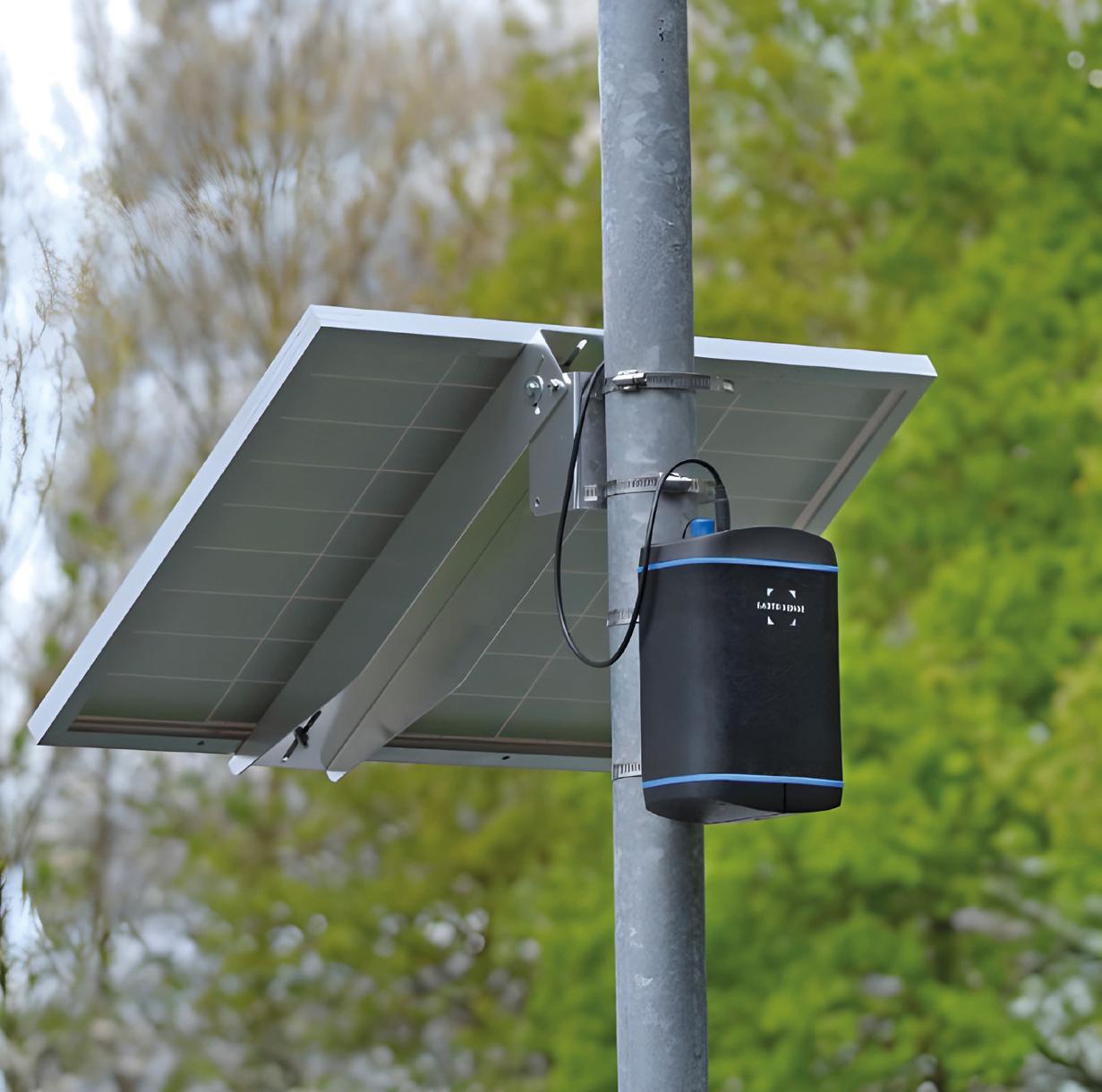
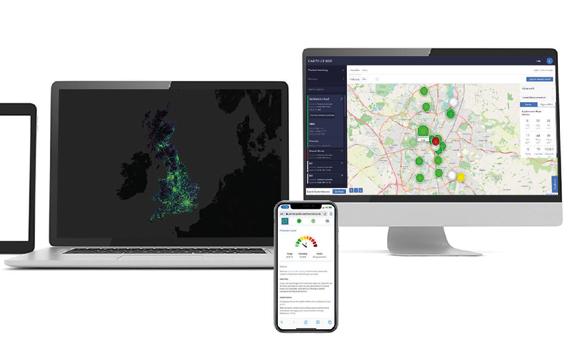
Join over 200 companies worldwide, who trust EarthSense to provide accurate air quality insights. www.earthsense.co.uk
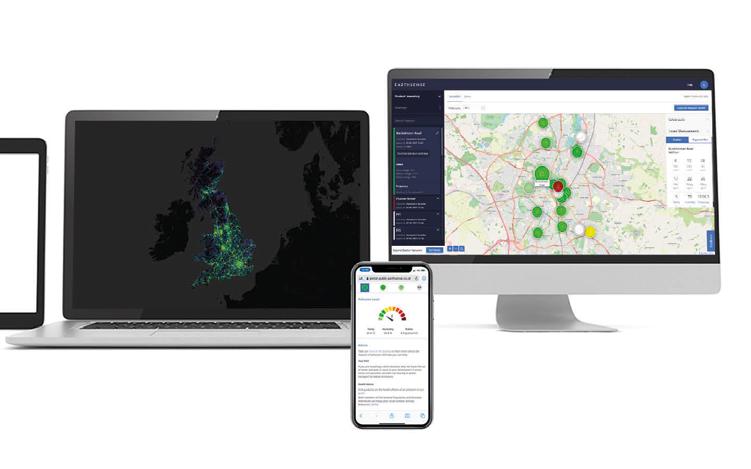
We offer air quality solutions that enable you to develop data-driven action plans. Identify high emitters, educate the public, and evaluate and report your interventions.
With iMCERTS compliant measurements, a leading air quality software platform and bespoke air quality models, we offer detailed insights to empower you to work towards reducing air pollution.

Publisher:
David Harrison
E: d.harrison@spacehouse.co.uk
T: 01625 614 000
Editor:
Paul Day
E: paul@spacehouse.co.uk
T: 01625 614 000
Design & Layout:
Oli Bowden
E: design@spacehouse.co.uk
T: 01625 614 000
Business Development Manager: Andy Lees
E: a.lees@spacehouse.co.uk
T: 07843 632609
Air Quality News Magazine
published by Spacehouse Ltd
Pierce House, Pierce Street Macclesfield SK11 6EX
Contact
T: 01625 614 000
E: hello@spacehouse.co.uk
All rights reserved. Reproduction, in whole or part without written permission is strictly prohibited.
Welcome to the 29th issue of Air Quality News, which we are publishing on June 19th, which just happens to be Clean Air Day.
We always try to bring our readers a broad range of stories concerning our need to breathe clean air and in that respect, I’m delighted with the line-up we are presenting in this issue.
Of course, with Simon Guerrier on board we are guaranteed at least one story each issue that arrives from left field. This one however arrives from space. Simon looks at the systems designed to keep the earliest astronauts alive and takes the story to its logical conclusion: what air quality can we expect on Mars?
Back to earth with a bang and long-time contributors ClientEarth look at the dieselgate scandal which came to light 10 years ago. Emily Kearsey tells a shocking tale of cars fitted with defeat devices are still on the UK’s roads and still causing huge numbers of premature deaths.
I travel the short distance from the AQN offices to one of the UK’s three urban background supersites in South Manchester for an extremely instructive look around.
In an article written specifically for Clean Air Day, Kate Metcalf, Co-Director of the Women’s Environmental Network (WEN) talks about how she has been inspired by Rosamund Adoo-Kissi-Debrah. She writes: ‘This Clean Air Day, I hope we can all reflect on the people who have inspired us. And then act.”
We invited Dr Jim McQuaid, from the University of Leeds, to speak at our Northern Air Quality Conference in March but it clashed with the Royal Society’s Pairing Scheme, in which academics spend time with a relevant figure from government. Emily Whitehouse talks to Jim about how he got on.
Speaking of conferences, Nicola Pastore, co-founder of Solve the School Run will be speaking at our November conference in London. Emily talks to her about how the campaign took shape and how her background in data analytics strengthens their work.
In our International feature we turn to Pittsburgh where environmental film-maker Mark Dixon has taken on the role of air quality champion, documenting the city’s struggles in a work-in-progress film titled ‘Inversion’.
Martin Guttridge-Hewitt throws light on a strange paradox in which our efforts to improve air quality are beset with unintended consequences: namely, adding to global warming. Specifically, it is the reduction in sulphur emissions which leads to more solar radiation reaching the earth, which leads to more surface warming.
In what might be considered a sequel to Simon Guerrier’s article in the last issue, here he discusses the health benefits of interfacing with flora, and we round up the magazine by looking at the energy benefits of new solar technologies, specifically: flexible solar cells.
Paul Day | Editor

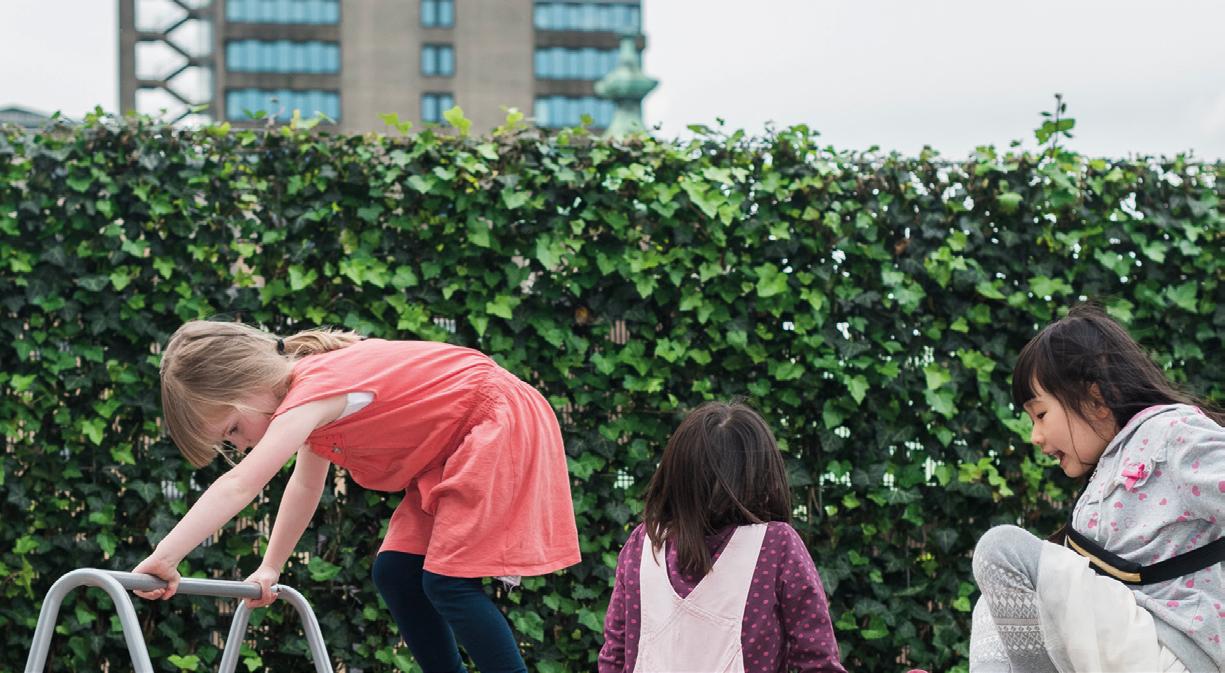
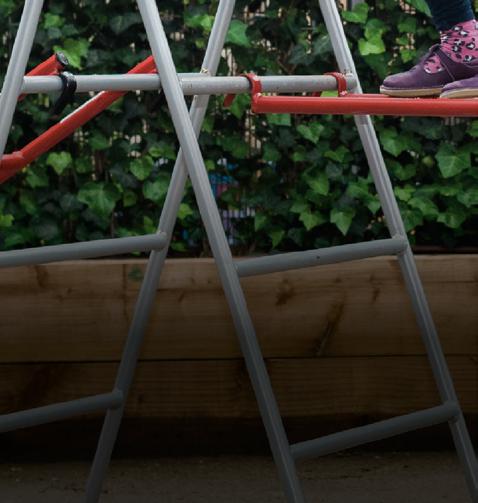
Air pollution is a growing concern in urban areas. Mobilane Green Screens Hedera helix ‘Woerner’ provide a natural and effective solution: scientifically proven to capture 40-60% of fine particulate matter (PM), improving air quality in cities, schools, and public spaces.




Enhances biodiversity and green infrastructure


Immediate and long-lasting impact

Create cleaner, healthier environments with Mobilane Green Screens – the smart choice for sustainable air quality improvement.






























































PAGES 6-7
News
A 'vast number' of delivery riders are using modified e-bikes.

PAGES 12-14
Breathing Beyond Earth
Air quality in space habitats is becoming a crucial consideration for future missions.
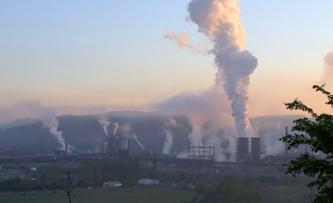
PAGES 22-25
International – Pittsburgh’s Air Pollution
How a film-maker is lifting the lid on local air quality.
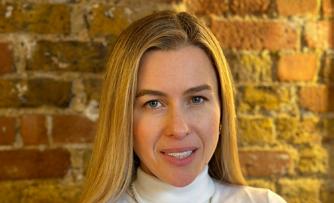
PAGES 30-33
The Big Interview
We sit down with Solve the School Run Co-Founder & Director, Nicola Pastore.
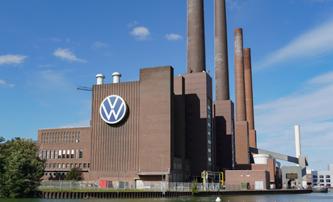
PAGES 8-9
Legal – Dieselgate 10 Years On
The scandal rocked the automotive industry and now we see the damage.
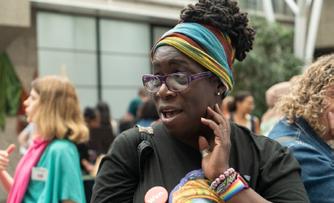
PAGES 16-17
Women shaping Activism
Rosamund Adoo-Kissi-Debrah’s fight for clean air is an inspiring call to action.
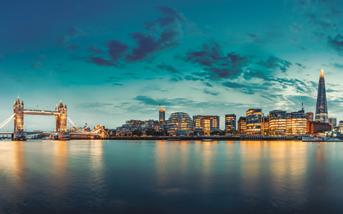
PAGES 26-27
Air Quality Conference
The first speakers are confirmed for the 2025 National Air Quality Conference.
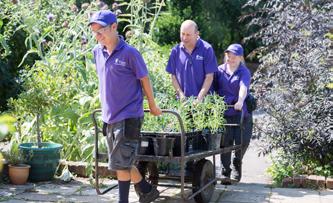
PAGES 34-35
Come Into the Garden
Charity Thrive champions gardening’s benefits for mental and physical health.
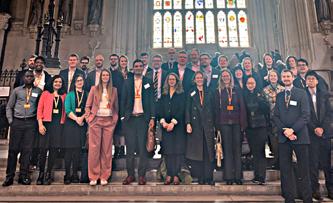
PAGES 10-11
Partners in Pollution
Science meets policy as air quality expert Dr. Jim McQuaid shares his experience.
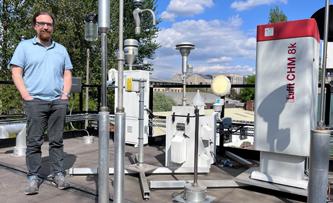
PAGES 18-21
A Breath of Fresh Data
The air quality ‘supersite’ in Manchester driving cutting-edge pollution research.

PAGES 28-29
The Great Reveal
Air pollution cuts exposed hidden global warming, forcing urgent adaptation.

PAGES 36-37
Flexible Solar Panels
Revolutionising renewable energy and making solar power more accessible.
A recent exercise to educate delivery riders to the potential dangers of their bikes has found that the use of modified equipment is widespread.
The London Fire Brigade are called to an e-bike or e-scooter fire every two days and have spent a good deal of time trying to educate people to the dangers that these batteries can pose.
Their latest initiative has seem them partnering with London Trading Standards to hold events across the city, focussing on areas that have seen a higher than average number of such incidents such as Wood Green, Tower Hamlets, Southwark and Newham.
The seven events were funded with £10,000 from the Office for Product Safety & Standards.
The two bodies, along with representatives from Electrical Safety First, spoke to e-bike riders around fast food restaurants as they waited to pick up food for delivery.
The riders’ equipment - particularly the battery packs - were examined to determine whether they were factory-manufactured or converted. Where safety issues were identified, riders were given advice and encouraged to take corrective action.
The London Fire Brigade's ChargeSafe team was also present, distributing safety flyers in a variety of languages to ensure key messages reached London’s diverse communities. Riders also received practical guidance on safe charging habits and proper battery storage to reduce fire risks in homes and workplaces.
London Fire Brigade Deputy Assistant Commissioner for Prevention & Protection, Richard Field, said: 'These events across London have been a great opportunity for our crews and partners to deliver crucial safety advice to those who need to hear it most.
'We learnt that a vast number of riders are using modified e-bikes. While it was encouraging to learn about some of the safe storage and charging practices riders have adopted at home, we know that there is an increased fire risk, in particular with bikes that have had battery packs fitted. Along with the incidents that we are now unfortunately routinely attending, this activity reinforces how vital events like these are.'
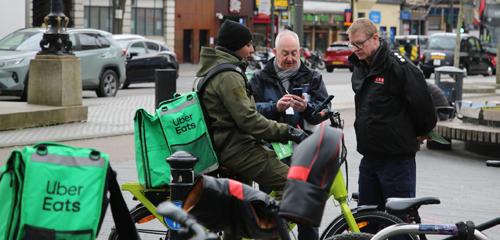
Scientists at the Leibniz Institute for Tropospheric Research (TROPOS) are using new techniques to identify previously undetected layers of cloud in the atmosphere, layers which will influence cloud formation and climate.
Using fluorescence lidar technology they have detected wildfire smoke in Europe that would be invisible to any other method.
Lidar works by sending laser pulses into the atmosphere and measuring the light that bounces back. Traditional lidar can detect particles, but it often can't say what kind they are, which is where fluorescence come in.
Fluorescence is a process where certain substances absorb light and then emit light at a longer wavelength. Put the

two together and when the laser hits the particles in the atmosphere some emit fluorescent light.
By analysing the wavelengths of this light it is possible to distinguish between, say wildfire smoke and volcanic ash.
Between August 2022 and October 2023, about 50 nighttime measurements were made. Several of these captured smoke layers from major Canadian wildfires, which had drifted over Europe. One standout event occurred over 4th -5th July 2023, when a 2 km thick smoke layer was observed over Leipzig, showing strong fluorescence.
Traditional lidar often misses thin, high-altitude aerosol layers but the fluorescence technique revealed several such layers at heights up to 10 km. This is significant as such smoke layers can influence cirrus cloud formation - high-altitude clouds made of ice crystals. One case, observed on 29th-30th May 2023, showed cirrus clouds forming just below a smoke layer, suggesting the smoke particles may have triggered the ice crystal formation.
This implies that the atmosphere may contain more smoke than previously believed, especially during wildfire seasons. While these thin smoke layers might not block much sunlight, they may still affect the climate by altering cloud formation.
A new study, led by the Barcelona Institute for Global Health, has found that exposure to air pollution during pregnancy may influence how a baby’s brain develops before birth.
Researchers studied 754 women - were in the early stages of pregnancy - in Barcelona between 2018 and 2021. Using detailed brain scans later in pregnancy, scientists examined how the babies' brains were growing in the womb.
Exposure to air pollution was calculated using a geolocation app installed on the participants’ mobile phones.
Researchers found that babies exposed to higher levels of pollutants showed some differences in brain development, such as wider spaces in parts of the brain (such as the ventricles and cisterna magna) and changes in brain structures like the cerebellar vermis, which helps with movement and coordination.
Black carbon, was also linked to a shallower Sylvian fissure, a brain fold

that plays a role in language and communication.
Although all the measurements are within what would be considered a normal range, Laura Gómez-Herrera, ISGlobal researcher observes: 'The point is that these differences, although small at the individual level, are indeed relevant from a population perspective, as they inform us about how pollution affects the foetal brain and its vulnerability to environmental exposures.'
1Energy has secured £21 million in government funding to build a city-wide heat network in Oxford, alongside which the company plans to invest £100 million of private capital. It is envisaged that the total investment could exceed £500 million as the network expands.
The Oxford Energy Network aims to reduce Oxford’s reliance on gas by targeting buildings with high heat usage. Once operational, the network could cut the city’s gas demand by up to 10% and reduce carbon emissions by 15,000 tonnes annually - about 2% of Oxford’s total emissions. Connected buildings could see their heating-related emissions fall by up to 81%.
Construction of the Oxford Energy Network is planned to begin in 2026, following public consultation and planning approval.
Iconic, grade-one listed buildings may soon be heated with low-carbon alternatives to traditional gas boilers.
Beyond environmental benefits, 1Energy has set up a community benefit task group, partnering with local institutions
to explore how the network can address fuel poverty, support community projects, and boost local employment.
Heat networks like this offer one of the most cost-effective and least disruptive ways to decarbonise heating. Using underground, water-filled pipes, they avoid the need for major retrofits and protect the visual appeal of historic city centres.

Shared EV charging scheme being trialled in Ireland
A trial in Ireland hopes to encourage people with off-street parking to make their chargers available with those without.
Homeowners will receive a free charger which they make available to other EV owners through an online platform, indicating at which times the charger is available for use.
The homeowners will earn money by renting it out, setting their own charging rates.
Lake District air offered to London Underground passengers
Two art graduates have been offering a breath of Lake District air to passengers on the London Underground.
Bags of Cumbrian air were connected to aeroplane oxygen masks and the set-up was installed in a carriage on the Victoria Line, the most polluted line in the network
Posters read: 'The level of harmful pollutants on this train is 10 times higher than the safe limit. Protect yourself with the Lake District fresh air masks, and join the fight for clean air.’
ULEZ scrappage scheme –the results are in
TfL have revealed that the ULEZ scrappage scheme, launched in January 2023, removed 35,094 polluting cars and 17,964 vans from the street of London.
This represents estimated annual savings of 160 tonnes of NOx, 8.5 tonnes of PM2.5 and 33,400 tonnes of CO2.
88% of the £210 million funding went to outer London residents, with Croydon and Hillingdon seeing the highest uptake.
For the full stories and more, visit: airqualitynews.com

By Emily Kearsey, lawyer at environmental law charity ClientEarth
Nearly a decade after the original Dieselgate scandal rocked the automotive industry, we now have the most comprehensive picture yet of the damage – and it is staggering.
A new report lays out a devastating picture: premature deaths, new asthma cases and a colossal bill. This isn’t historical damage – it’s ongoing. It’s finally time for governments to stop kicking the can down the (dirty) road and hold polluters to account.
The original scandal
The Dieselgate scandal broke in 2015, revealing that millions of Volkswagen diesel vehicles were fitted with a specific form of ‘defeat device’.
Defeat devices affect the operation of an engine’s emission control system – by switching it off or reducing its effectiveness when outside of testing conditions. This means that in the real world, vehicles with defeat devices can emit levels of pollution well over regulatory limits.
But it wasn’t just Volkswagen – official testing programmes have shown that hundreds more vehicle models across almost
all major auto manufacturers emit extremely high levels of pollution in real world conditions. Broader remote sensing campaigns present an even more dire picture, implicating almost all Euro 5 and pre-RDE Euro 6 engine families.
The media coverage was massive and sustained. Many car owners felt deceived, especially those who had chosen diesel models for their supposedly low carbon emissions and fuel efficiency. What has and hasn’t happened since then?
Despite the outrage, little has been done to tackle the problem in the EU and UK in the last ten years.
While some criminal sanctions and fines have been applied in relation to the original VW scandal, by and large, in the EU and UK, most auto manufacturers have gotten away scot-free. They have not been sanctioned or held to account to deliver effective solutions.
By comparison, in the US, Volkswagen was forced to buy-back vehicles or offer effective emissions fixes. It also paid almost US$3 billion into a mitigation trust fund to help US states implement action to reduce pollution from road transport. Until now, individual consumers have had no choice but to take to the courts to access compensation. More than 1.9 million consumer claims are ongoing against 18 major auto manufacturers in the UK alone. In fact, some crucial hearings are happening this year. Documents might finally be revealed during the course of the trials that could give us an even clearer picture of the legacy of Dieselgate.
The use of defeat devices has been illegal since 2007, subject to a few limited exceptions. Between 2018 and 2020, the top European Court issued a suite of rulings which make it crystal clear that these exceptions are extremely narrow. A new legal framework also came in in 2020, putting new duties on authorities to investigate the suspected use of this illegal technology and force recalls when its use is uncovered. That’s why in 2023, ClientEarth sent legal complaints to national governments, including the UK Government, highlighting a wealth of evidence suggesting the widespread use of defeat devices, and demanding that action be taken.
Following on from our complaint, the UK Department for Transport then confirmed last year that it is investigating 47 models across 20 brands. This number has since risen to 76 vehicle models from 27 brands. However these investigations are being carried out behind closed doors and widespread recalls have not yet taken place. After years of delay, people are right to question whether more could be done.

“Chronic illness, missed work, lives cut short – these are the real-world consequences of inaction. And the impact falls heaviest on those who can least afford it: children, people with pre-existing conditions, low-income households and ethnic minorities.”
Emily Kearsey
Lawyer at ClientEarth
Meanwhile – and this might be the most astonishing fact in this whole affair – excessively polluting vehicles are still on our streets. Even though the use of defeat devices is illegal in almost all circumstances, clean up efforts haven’t really started. A new report paints the most comprehensive picture yet of the alarming health and economic impacts of the emissions likely linked to the use of these prohibited devices.
The report, which was produced by the Centre for Research on Energy and Clean Air (CREA) and commissioned by ClientEarth, looks at suspiciously high nitrogen oxides (NOx) emissions that are well above the legal limits and evaluates the impacts of such emissions on public health and the economy across

the UK and EU. The report was based on remote sensing data collated by the TRUE initiative and the International Council on Clean Transportation, the organisation that ‘broke’ the original Dieselgate scandal.
The numbers are shocking: between 2009 and 2024, these excess emissions are estimated to have caused 16,000 premature deaths in the UK alone, 30,000 new cases of asthma in children, 800,000 days of sick leave and an economic burden of £96 billion.
Chronic illness, missed work, lives cut short – these are the realworld consequences of inaction. And the impact falls heaviest on those who can least afford it: children, people with pre-existing conditions, low-income households and ethnic minorities.
Alarmingly, excess emissions that are well above the legal limit account for 63% of the total emissions from these vehicles. In other words, two thirds of the health and economic burden of air pollution generated by these vehicles could have been avoided. Making polluters pay – the role of government
Why has there been no industry-wide accountability? And for how much longer will polluters be allowed to operate above the law?
In practice, public authorities should be issuing vehicle recalls and retrofits to finally rid cars and vans of defeat devices. The rules are clear that vehicle owners should not be left to pay for the costs of any recalls.
The UK Government has the legal duty to intervene and demand that manufacturers clean up their act. The Environment Act 2021 gave ministers the power to introduce new laws to enforce vehicle recalls. Yet more than three years later, we’re still waiting for Government to give itself the tools it needs to fix the problem.
Unless the UK Government acts swiftly to remove prohibited defeat devices from our vehicles, an additional 6,000 premature deaths and £36 billion in health and economic costs are projected between now and 2040.
Auto manufacturers cannot be allowed to continue sweeping this scandal under the carpet. If we are serious about cleaning up our air, protecting public health, and restoring trust, then this Government must step up. It must act decisively to force polluters to fix the problem they created – and foot the bill for doing so.
We have the data. We have the legal obligations. What we need now is the political will.
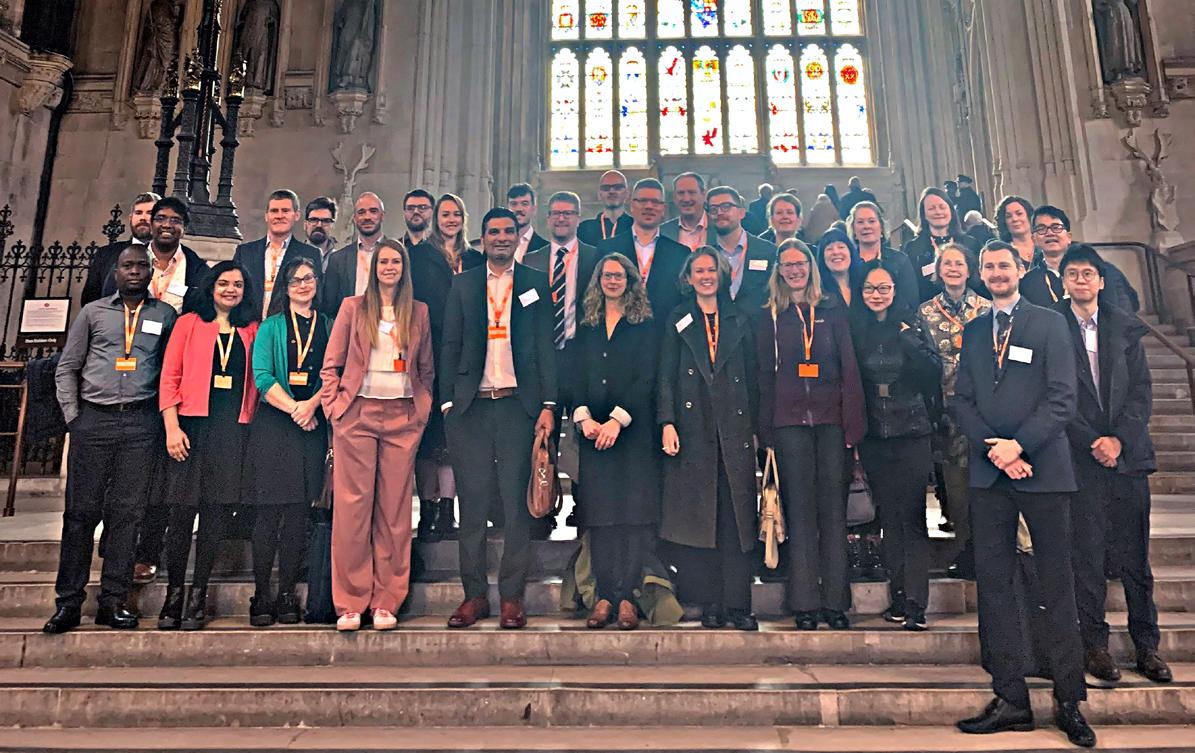
By Emily Whitehouse, Journalist
Emily Whitehouse sits down with air quality expert Dr Jim McQuaid, from the University of Leeds, to discuss his recent experience of this year’s Royal Society Pairing Scheme.
Over recent months, Dr Jim McQuaid has become quite a regular feature in Air Quality News. Jim, who currently works at the School of Environment at the University of Leeds, featured in our November magazine issue, discussing the fallout from firework displays. We also covered his recent research examining how different climate change scenarios would affect pollution-related deaths in Europe by 2050.
However, once we found out Jim had been selected to take part in this year’s Royal Society Pairing Scheme, we couldn’t pass up the opportunity to exploit his expertise further.
‘Hello,’ Jim yelled as he joined our teams chat. ‘It’s really nice to be talking to you again,’ a smile spreading across his face.
‘The Royal Society Pairing Scheme is one of the most impressive projects I’ve ever been a part of,’ Jim says.
‘In a nutshell, academics who want to apply have to fill out a series of questions that are made up of around 100 words. You have to specify what you think you could input to government, and I chose air quality. Overall I think around 400 people applied, but only 30 of us were chosen to take part, and I’m really proud that three of us came from Leeds.
‘All three of us came from different disciplines, but we all had an environment focus. I think the government were really keen to hear from a lot of environmental experts this year, considering they’ve set some pretty huge targets and we’re just five years away from the 2030 net zero goal.’
The Royal Society Pairing Scheme was founded in 2001 and has been taking place every year since. The programme, which is delivered in partnership with the Government Science & Engineering (GSE) Profession, invites scientists for a ‘week in Westminster’ and pairs them up with a member of parliament –this can be an MP, a peer or a civil servant. The whole idea aims to ensure policymakers can make the best decisions based on concrete scientific evidence.
‘The scheme is basically the mechanics of how academic evidence gets through to government,’ Jim says. ‘Authorities are eager to access real data because the number of genuine scientists in parliament is pretty sparse, often MPs comes from backgrounds associated with finance or law. Though this does mean that people like us won’t be put out of a job anytime soon.’
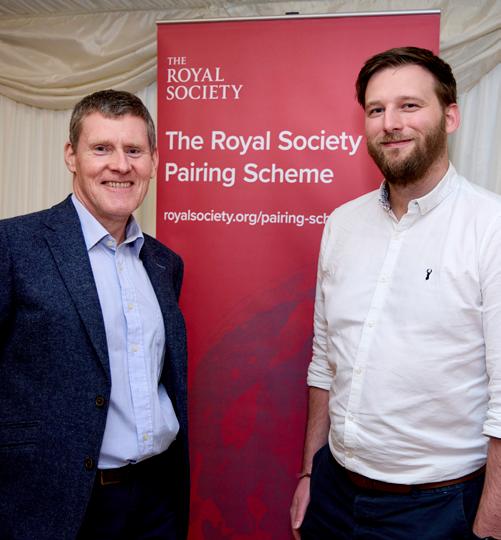
‘On a serious note, one of the MPs who used to take part in the scheme was Keir Starmer, so the evidence and topics we take to Westminster could one day be in the hands of the future prime minister,’ Jim explains.
‘The person that I was paired up with was Jack Jones who is a senior scientist from Defra, and I couldn’t have been happier about it. I was able to speak with the Defra Futures team and discuss some of the biggest challenges hindering clean air targets. Some of the main areas of concerns that we talked about were emissions that come from the planning sector and wildfires.’
The latter is a particular cause for concern. The most recent figures from the Global Wildfire Information System show this year the UK have already experienced a record-number of wildfires, with more than 29,200 hectares burned. To put this into context, the previous high, which was recorded in 2019, was 28,100 hectares for the entire year.
Alongside discussing air pollution threats, Jim also explains he was excited to take part in the pairing scheme so he could enquire about upgrading low-cost air pollution sensors. He says: ‘We have quite an expansive network of low-cost sensors in Leeds, and while they do the job, the way Defra monitors air pollution is probably better. The Defra Air Quality Expert Group have published a report on them and are thinking about how they can be used within English regions, but there will be a significant difference between the quality of data obtained from sensors that cost around £200 and an AURN monitoring site.
‘One of the main downfalls with low-cost sensors, I’ve found, is how they’re marketed to the general public. Our sensors are mostly set up in quite residential areas which can cause problems. For example, if someone is having a BBQ or a bonfire, and the sensor is quite close to it, they could send a signal to the council that the air quality in that area is particularly poor, when most of the time that isn’t the case.’
Another topic that Jim says he was particularly keen to investigate was the progress on Ella’s Law – a bill that was first introduced into parliament in May 2022 following the death of Ella Roberta Adoo Kissi Debrah. The legislation aims to establish a right to clean air and would set up a commission to oversee government actions.
‘I think the action being taken to improve indoor air quality is really positive,’ Jim says. ‘The government passed Awaab’s Law pretty promptly and it’s certainly a step in the right direction to hold landlords and councils accountable for housing people in unsafe conditions. However, I wish the same speed would be applied to Ella’s Law. The legislation was introduced three years ago, and it doesn’t seem to be getting any closer to achieving Royal Assent. I just hope the government make it a priority soon, especially before another general election is called.’
While the pairing scheme involves scientists spending time in Westminster, the programme also includes a reciprocal visit. This means the parliament members involved in the scheme g o and visit their scientists places of work so they can get a better understanding of their research.
‘Currently I am in the process of arranging for Jack to visit Leeds, which I think will happen towards the end of the month,’ Jim remarks. ‘In a way, I almost think that this part of the scheme will be more beneficial. Jack has said that when he visits, he will be bringing some other members of his team, and he wants to act like a sponge and try and take in as much as possible.
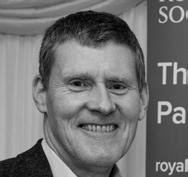
“I think the action being taken to improve indoor air quality is really positive. The government passed Awaab’s Law pretty promptly and it’s certainly a step in the right direction to hold landlords and councils accountable for housing people in unsafe conditions. However, I wish the same speed would be applied to Ella’s Law.”
‘One of the things I absolutely want to make happen, is for him to meet Catherine Noakes, who works as a professor of environmental engineering at the University of Leeds and specialises in indoor air quality. I would also really like to set up a meeting with Douglas Booker who’s one of the UKRI Clean Air Champions and has been based in Leeds for quite some time now. Doug also has a particular focus on indoor air quality and leads on environmental justice.’
Although Jim’s involvement with the scheme is coming to an end, he hopes it can continue to enact change for as long as possible: ‘I think it’s amazing that the Royal Society is funding this programme and has managed to keep it going for 24 years. I’ve never known such a powerful scheme that gets so much recognition from the government. When you do the kind of work that we do and you’re so passionate about a subject, getting people to listen isn’t always about publishing papers, it’s about talking to the people who make the policies.’
By Simon Guerrier, Journalist
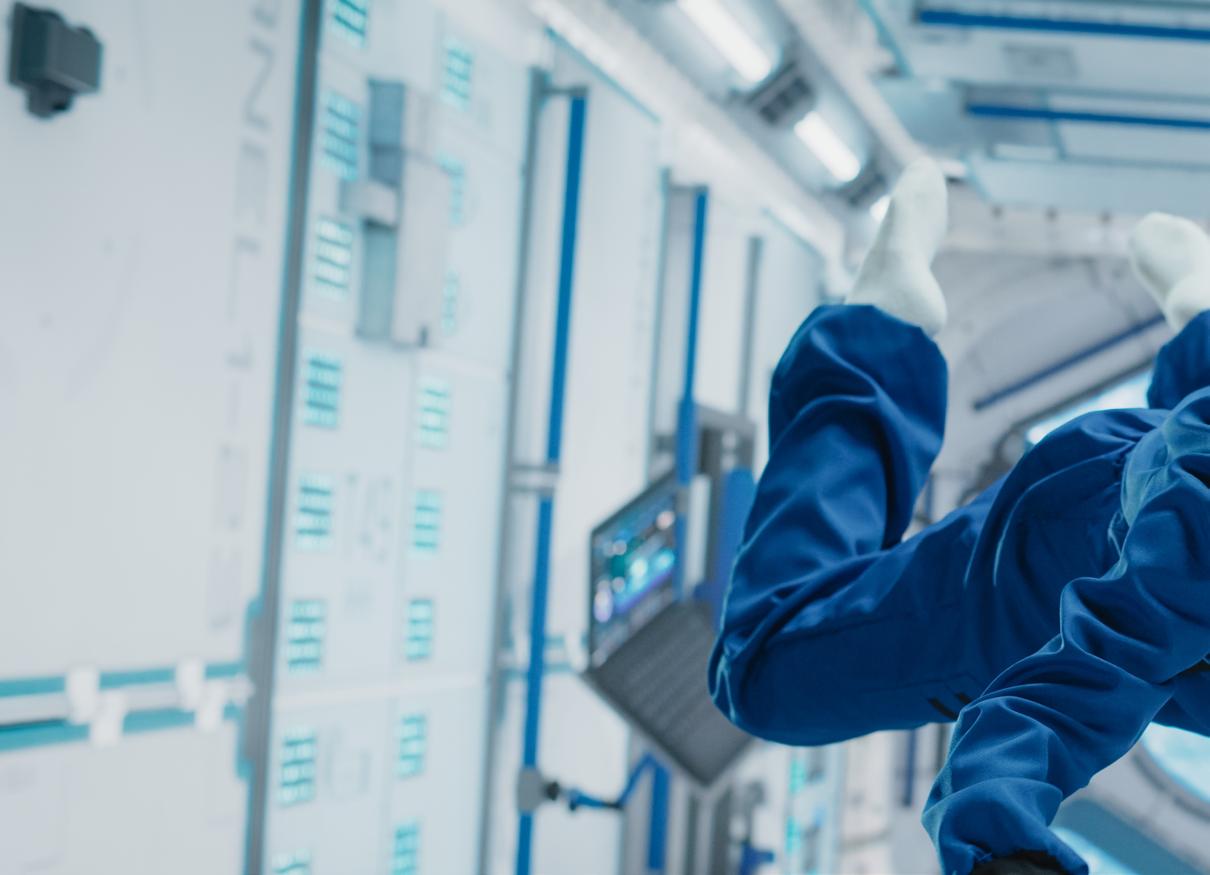
There’s increasing scientific interest in air quality in outer space, which will be a vital factor in our plans to send people to the Moon and Mars…
It might seem odd to consider air quality in space, given that – by definition – there isn’t any air in a vacuum. But when we send humans into space, we provide them with air-filled artificial environments. With plans to send people to the Moon and then Mars in the next few years and decades, space scientists are increasingly conscious of air quality.
For example, in February this year, the academic journal GeoHealth published a study of the risks to health of exposure to dust on the surface of Mars. In April, SpaceX’s latest supply mission to the International Space Station delivered three different air quality monitors so that they can be tested in space. Another device, which is meant to distinguish smoke from dust, is also being tested.
But such considerations aren’t exactly new.
‘It’s been an issue since the dawn of the space age,’ says Giles Sparrow, an astronomer and spaceflight historian whose books include Mars and Spaceflight: The Complete Story from Sputnik to Curiosity. ‘Whether it’s a trip into orbit or beyond, to the Moon and Mars, your spacecraft is a sealed, pressurised container with a given quantity of air. You need enough air for the time you’re up there. You need to compensate for your own affect on the chemical mix, which is the result of breathing in oxygen and then exhaling carbon dioxide. And you need the air to stay clean, avoiding a build up microbes and dust.’

A spacecraft, space station or base on another world will get dust from the same sources as we do on Earth, such as skin flakes, fibres from clothing and items we use such as deodorants. The difference in the microgravity of space and lower gravity of the Moon and Mars is that this dust doesn’t settle in the same way it does here: much of it remains floating. To keep the air clean and breathable, spacecraft and space stations have long been fitted with filters.



‘Laika, the famous space dog, was sent up into orbit in 1957 with an oxygen generator and devices to absorb carbon dioxide,’ says Giles. ‘By the time you got human-crewed missions, the early Vostok missions used potassium hydroxide scrubbers, which were followed by lithium hydroxide, with activated charcoal filters to deal with particulates and prevent microbial build-up. The main issue was that these things had a limited lifespan, so air quality dictated how long you could be in space on each trip.’
As well as the air itself, attention must be paid to regulating the atmosphere inside the sealed container. ‘The side of the spacecraft that is in sunlight will get intense heating while the side in shadow will get cold,’ explains Giles. ‘To compensate, spacecraft are often made to slowly rotate and we’ve seen increasingly sophisticated dehumidifiers and other air conditioning systems to produce a consistent “shirt sleeve” environment of between 18 and 25 degrees, with a breathable atmospheric pressure. It’s the same kind of technology we’re familiar with in climate control systems in buildings.’
One big issue for space travellers is that, at present, a spacecraft must launch carrying all the elements it needs to supply and sustain its artificial atmosphere. ‘In the early days, the Soviets had much more powerful rockets than the Americans and so could launch larger payloads. They used an 80:20 mix of nitrogen and oxygen: an Earth-like mixture of air. NASA needed to scrimp and save on weight to get things into orbit. In the early 1960s, they used an atmosphere of pure oxygen which could be supplied at lower pressure. But that was a fire risk; a fire killed the crew of Apollo 1. Safety measures were improved after that – though there were still problems.’
‘A famous example is that they used two different carbon dioxide filtration systems, one in the main command module and a more basic one in the lunar module – the bit of the spacecraft that went down to the lunar surface and back. The latter was designed to keep two astronauts alive for about 45 hours. When things went wrong on Apollo 13, three astronauts needed to use the lunar module as a lifeboat for several days. There weren’t enough canisters of lithium hydroxide for the filter in the lunar module to last that long. And though there were plenty of canisters for the command module filter, they didn’t fit the smaller unit.’
With time fast running out for the astronauts given their limited supply of air, ‘NASA engineers on Earth quickly devised an ingenious method to bridge the two filters, using materials they knew were on board the spacecraft. It was lashed up from things like torn-off covers of procedure manuals and lots of duct tape! They then had to explain to the astronauts, over the radio, how to construct their own identical version.’
Like following the instructions of a ‘make’ on Blue Peter, but without being able to see the one they’d made earlier?
‘Exactly. Amazingly, they did it and it worked, bringing the amount of carbon dioxide in the air down to a level they could still breathe, for long enough to fly home.’
‘By the time of [orbital laboratory] Skylab in the 1970s, there was a lot of work going on testing filtering systems and using Dräger tubes to monitor the presence of certain gases, all of which was needed for longer durations in space. The International Space Station, which has been permanently crewed since November 2000, has regenerative systems
which use chemicals to filter out carbon dioxide and treat it in situ, putting the oxygen back so that air cycles round and is breathable indefinitely. That’s basically what people will use when they go back to the Moon and then on to Mars.’
However, things get more complicated when we send people out onto the surface of the Moon or Mars. Both are blanketed in ‘regolith’, a soil of dust and fragments of rock. It’s very different from the dust and soil we’re used to here on Earth.
‘Yes, the surface of the Moon is effectively a vacuum so there’s no weather. Instead, the dust there has been pummelled by micrometeorite bombardment, grinding it down to something much finer than the dust on Earth. That’s then subject to electrostatic forces, so it doesn’t all settle but hangs around in a sort of thin cloud.’ We know this because when crewed Apollo missions visited the Moon – between 1969 and 1972 – the astronauts in lunar orbit witnessed faint ‘God rays’, like we get on Earth when the sun shine through the cloud. On the Moon, these are caused by illuminated dust around sunrise and sunset.

Having ventured out on to the lunar surface themselves, the astronauts carefully brushed down their spacesuits before clambering back into the lunar module. Even so, lots of the sharp, craggy dust stuck fast and was carried inside. Once inside the ship and able to take off their space helmets, they had direct contact with this moondust – which they found had a potent, itchy smell like a bonfire or gunpowder. At least one of the astronauts had an allergic reaction to this – a sore throat and eyes that he said was like hayfever. In retrospect, we know they were all incredibly lucky. The sharp, craggy moondust has since been found to comprise about 50% fragments of silicon dioxide glass created by meteor impacts. That’s what makes the dust so sharp and sticky; that’s what they were breathing in.
At the time, the main concern was that this dust might contain spores or microbes, which could infect the astronauts and then be carried home, potentially unleashing a space plague. Apollo 11’s Mike Collins later recalled the ‘elaborate vacuum-cleaning procedure’ to ensure no dust or dirt was carried into the command module, Columbia, that returned him, Neil Armstrong and Buzz Aldrin to Earth.
‘Feeling slightly ridiculous,’ about hoovering their spaceship, he said they also pumped oxygen into the lunar lander, ‘so any bugs would have to swim upstream to get into Columbia.’ Then, back on Earth, they were put into quarantine, living in a sort of glorified caravan,
playing cards and drinking martinis for a fortnight until given the all clear. A NASA scientist had to join them when she was also exposed to some of the moondust they brought back.
‘They did take the risk of microbial infection very seriously to begin with,’ says Giles. ‘After a few missions they dismissed the idea – but it’s taken more seriously again now. I’ve seen some recent scientific studies suggesting that microbes could survive in the ice we’ve detected in the shadowed craters at the lunar south pole. That ice is of interest because it’s a resource we could use to produce water, oxygen and rocket fuel. That would be useful for a permanent base on the Moon as we wouldn’t have to carry everything with us from Earth. But we’ll have to consider that risk of contamination.’
Contamination by alien life? ‘I think,’ says Giles carefully, ‘that if there are any microbes there, they will have most likely originated on Earth. But yes, there’s the possibility that they come from meteorites or somewhere else in the Solar System. We’ll have to see. Either way, it’s really interesting and we’ll obviously want to find and study this stuff. But we also need to consider the risks. That means we’ll need much better filtration systems than we use on Earth, and good air lock procedures to reduce the amount of moondust brought inside.’ He considers. ‘I doubt you can ever remove it entirely.’
Things are even more hazardous on Mars. The academic study published earlier this year, Potential Health Impacts, Treatments, and Countermeasures of Martian Dust on Future Human Space Exploration, lists toxic components of Martian dust including gypsum, nanophase iron oxides, perchlorates and silica. There are also trace amounts of arsenic, beryllium, cadmium and chromium,. ‘Those are all highly reactive, toxic chemicals,’ says Giles. ‘We know the effects they have on people exposed to them on Earth. You’re looking at a significant risk of silicosis, cancer, lots of things like that.
‘There are also these enormous dust storms on Mars. Very low atmospheric pressure means that even the highest wind speeds are unlikely to inflict direct structural damage, but the winds shift enormous volumes of fine dust around, which could clog up systems, reduce the power from solar panels or blanket any base we built there.’
Just as moondust has a distinctive, gunpowder tang, we also know from the chemical make-up of the Martian atmosphere what the air smells like there. Relatively high levels of Sulphur mean it must stink like rotten eggs.




Hmm. Maybe what we gain most from an understanding of air quality in space is the value of what we’ve got here on Earth…

21,000+ EXPECTED TOTAL READERSHIP
2k+
CIRCULATED PRINTED COPIES
Sent directly to all named key decision makers in councils across the UK
12k+
ESTIMATED PASS-ON READERSHIP
We estimate that the printed copies will reach an additional 11.5k+ audience
7.5k
FURTHER INDIVIDUALS
The guide will also be sent out to our whole email newsletter database
The Air Quality Procurement Guide is a printed publication and digital directory offering 12 months sector coverage to organisations promoting products and services to the local government market. The key aspect of this publication is the targeted distribution. No other marketing opportunity in this sector offers the best route to this hard-to-reach market with zero waste. We post a printed copy to 1,900 of the most important policymakers in local authorities across the UK, tasked with tackling air quality, including; • Mayors • Chief Executives • Directors of Procurement • Directors & Heads of Environment






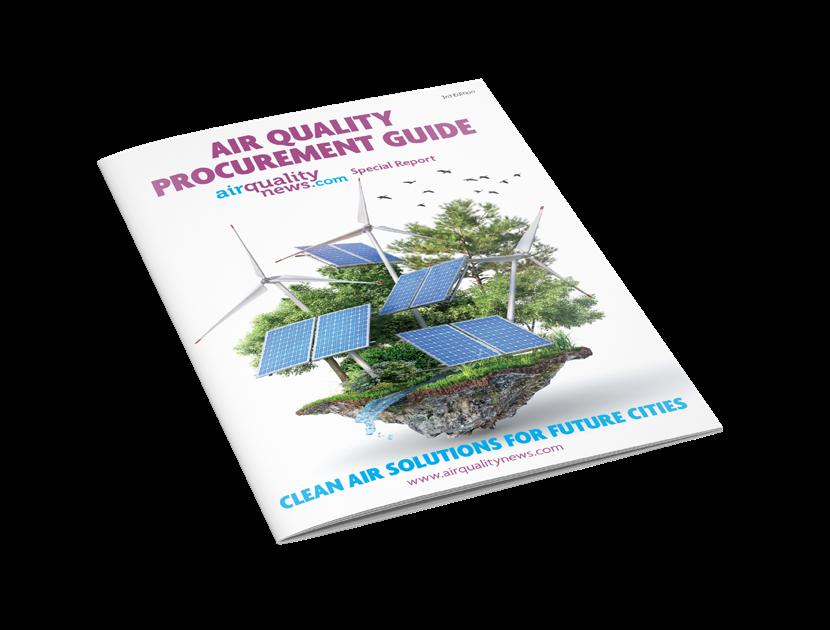

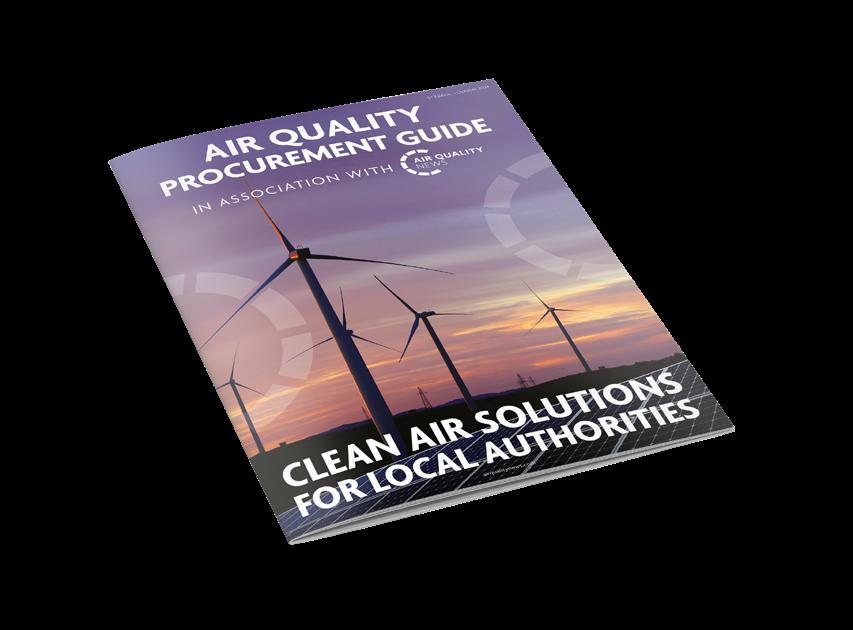
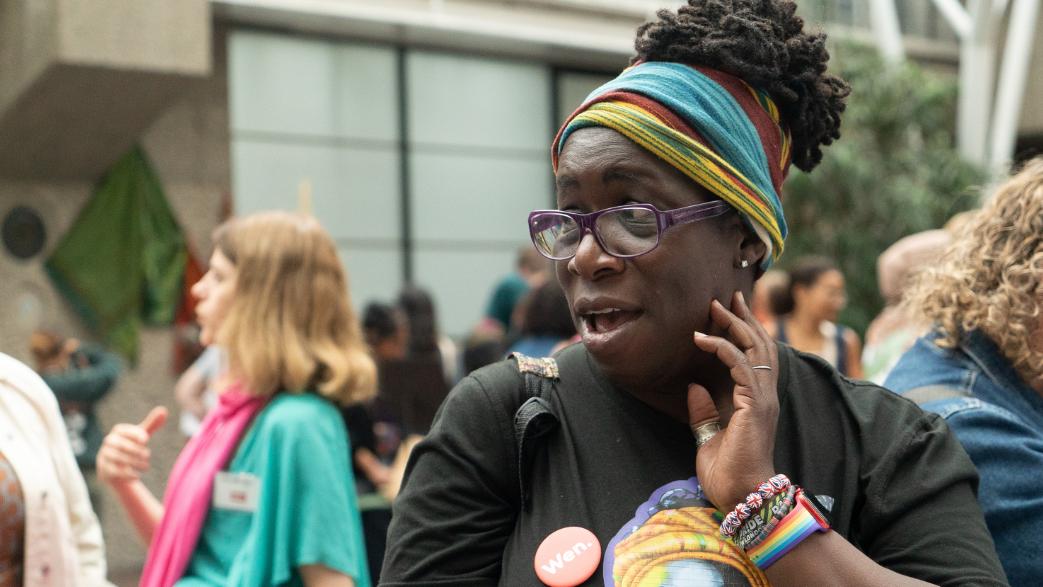
By Kate Metcalf, Co-Director of Women’s Environmental Network (WEN)
In this article, written for Clean Air Day, Kate Metcalf, Co-Director of the Women’s Environmental Network (WEN) talks about how she has been inspired by Rosamund Adoo-Kissi-Debrah.
I first met Rosamund Adoo-Kissi-Debrah when we invited her to speak at our WEN Forum event back in 2019: “Air (e)quality: What’s gender, race and poverty got to do with air pollution?” She got up on stage and told her story - not to gain sympathy, but to galvanise. To bring attention to the ways in which air pollution is not just an environmental issue, but a gender and a justice issue. I remember sitting in the audience, thinking about how her daughter Ella was the same age as my youngest. It’s something that has stayed with me. Because the truth is, any one of us could have a story like Rosamund’s and Ella’s. But in a society where race, class, and gender so often determine your risk of harm, some of us are more likely than others. That’s not acceptable. For those who might not know her story, Rosamund is the mother of Ella Roberta Adoo-Kissi-Debrah, the first person in the world to have air pollution officially listed as a cause of death. Ella was just nine years old when she died following a severe asthma attack in 2013. It took seven years of campaigning for the truth to be recognised, and for the coroner to rule that air pollution had contributed to her death. That moment wasn’t just a landmark legal victory; it was a turning point in public awareness and environmental health policy.
What Rosamund did, and continues to do, is extraordinary. She transformed her unimaginable grief into a relentless campaign to protect all of our children. She became, as Air Quality News rightly described her, “the most recognisable and relentless figure advocating for clean air.” Her strength, her clarity, and her refusal to let this issue be sidelined is something I deeply admire.

“Rosamund shows us what courage and persistence look like. And what it means to lead with heart. This Clean Air Day, I hope we can all reflect on the people who have inspired us. And then act.”
Kate Metcalf
Co-Director of Women’s Environmental Network (WEN)
Her quote in the recent interview still echoes in my mind “I need to dream big so I would like clean air to become a human right all over the world. I believe no matter where you come from, your race, sexuality, religion, doesn't matter, you're entitled to breathe clean air.”
The personal is political - especially when it comes to air
At WEN, we’ve always understood that environmental issues aren’t experienced equally. Women, especially women from racialised and marginalised communities, are disproportionately impacted by air pollution. They’re often the ones doing the unpaid care work - taking children to school, pushing prams along polluted roads, and spending more time in indoor spaces where air quality is still poorly regulated.
Rosamund has always understood this too. I last saw Rosamund at our Climate Sisters event at the Barbican in London. It was a room full of women - many of them mothers, many of them activists, all of them concerned about the climate crisis and the air their children breathe. Rosamund chatted to every single woman in that room. She didn’t just deliver a powerful speech and leave. She listened and connected.
Her human and down to earth approach shows that anyone can be an activist and bring about change, although you wouldn't wish anyone to have to experience such a terrible tragedy in order to do this.
The injustice of inaction
Despite progress in some parts of the UK, notably in London, where it’s clean air zone, the ULEZ has helped to reduce some pollutants, the national picture is bleak. There is still no clear national legal framework recognising the right to clean air as a human right. Rosamund has long campaigned for a new Clean Air Act known as Ella’s Law, which would enshrine this human right to clean air into law, and also provide a pathway for the UK to reach the World Health Organisation’s (WHO’s) air quality targets. Our current targets for air quality fall way behind that and indeed the rest of Europe. And the people who suffer most are the ones with the fewest resources and the quietest political voices. The Government’s inaction is especially stark when viewed through an intersectional lens. Women are more likely to live in poverty, to be primary carers. Children, especially from minoritised backgrounds, are more likely to live near busy roads. Air pollution isn’t just about health; it’s about inequality, invisibility, and political failure.
Clean air as a right, not a privilege
What we need is real, systemic change. We need clean air to be recognised as a human right. That means national regulation that matches the urgency of the crisis. It means proper enforcement against polluters. It means investment in infrastructure that works for everyone, affordable, electrified public transport; cycling lanes with safety and lighting built in; cycling training and support starting at school; low-traffic neighbourhoods that don’t push pollution from one street to another, but actually reduce it overall. We need more than individual action. We need joined-up policy that addresses the links between pollution, housing, income and health. We need better data on indoor air quality - something that is still shockingly under-researched despite its links to childhood asthma and long-term respiratory illness. And we need political courage to say no to airports that bring increased pollution, and yes to a future where public transport is affordable, reliable, and clean.
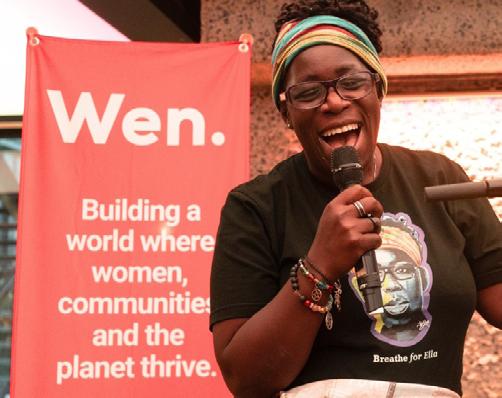
At WEN, our work on air pollution includes greening inner city areas in Tower Hamlets, community-based education and advocacy through our Green Baby campaign, particularly indoor environments. And through our Climate Sisters programme we work with women to build the knowledge, power and networks needed to push for safer, healthier futures.
Listening to lived experience
One of Rosamund’s greatest strengths is how she brings people with her. She doesn’t gatekeep her campaign. She invites everyone who shares the goal to join her. That’s real, feminist leadership. And that’s why her work has helped shift the conversation from policy papers to kitchen tables and school gates.
I think often about the women who have shaped my activism. Rosamund is one of them. Not because she’s a public figure or because she won a landmark legal case. But because she made this issue real. Because she has always insisted that clean air is not a statistic, but a matter of life and death.
Through her campaigning she has built a permanent monument to her daughter - not least in the Ella Roberta Foundation and the statue of Ella that was unveiled in Lewisham earlier this year. Rosamund shows us what courage and persistence look like. And what it means to lead with heart. This Clean Air Day, I hope we can all reflect on the people who have inspired us. And then act. Whether that means joining a campaign, pushing for better local transport, getting on our bike, or simply refusing to accept the status quo.
Because as Rosamund has taught us, dreaming big is the first step. But it’s action that turns those dreams into change.
Women’s Environmental Network (WEN) is a UK charity working at the intersection of gender, health, and environmental justice.
To learn more, scan or click the QR code to visit the website: www.wen.org.uk
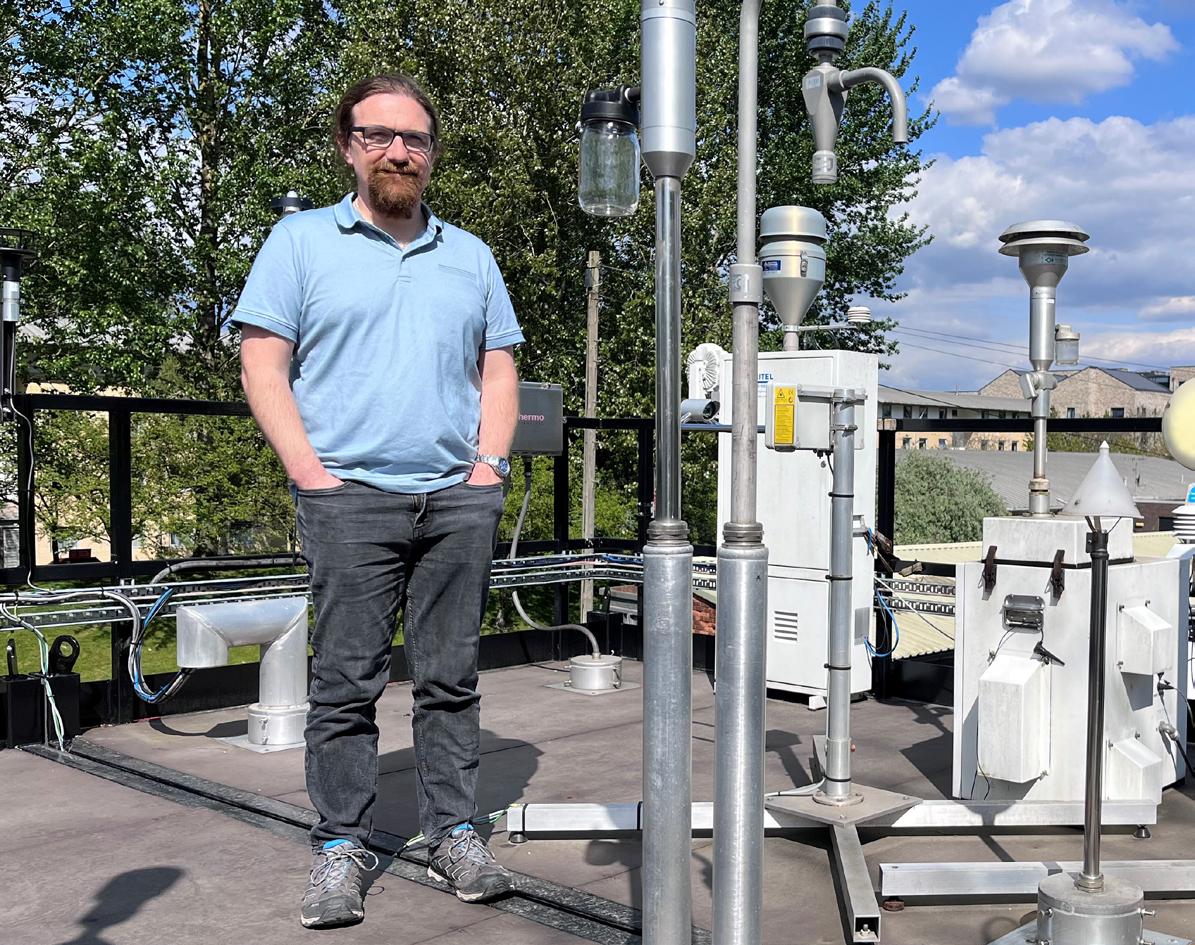
By Paul Day, AQN Magazine Editor
Less than 20 miles from the Air Quality News offices is a building pieced together from shipping containers in which some of the most important work in the air quality field takes place. This is Fallowfield in South Manchester, location of the 1893 FA Cup Final and home to one of the country’s three urban background air quality monitoring ‘supersites’.
The three sites - the others being in Birmingham and London - were created with funding from the Natural Environment Research Council (NERC) to take our understanding of air quality to a new level. The sites were to feature extremely sophisticated instruments able to measure gases, aerosols and a range of meteorological phenomena.
The Manchester site is run by the University of Manchester and is also affiliated to the National Centre for Atmospheric Science (NCAS). Showing us around the facility was Dr James Allan who, conveniently, works for both.
James originally came to Manchester as an undergraduate in the mid-90s, ultimately doing a PhD in the Atmospheric Science Group in the UMIST department of physics. And he’s yet to leave.
As someone involved at the very beginning of the supersite concept, he explains how everything came together and why the relatively leafy Fallowfield was chosen as the location.
“The majority of the time, people are not walking down the street or on public transport or coming into contact with the big pollution sources. The majority of our time is spent at home

or in the office, so we’re not exposed to the highest levels of pollution. That’s not to say those aren’t important, but the measurements that we’re trying to get here are representative of a baseline level pollution that you get exposed to by living and working in a city.”
Who’s air is it anyway?
This immediately begs the question of where the air being monitored originates. Much of what is identified has been blown in: PM2.5 and ozone fall into this category. Other pollutants, such as nitrogen dioxide - seen by many as the main pollution problem in Manchester - is local. “In theory, particulate pollution from a given source can last weeks and go halfway around the world,” James explains. “In reality, what tends to happen is, after it’s emitted, it’s going to disperse, and the influence of a given source is going to lessen the further you get away from it.
“But if you’re downwind of say, a big city, you can be hundreds of miles away from a source area and still feel the influence of it. Within the UK, the most polluted periods we get - in terms of things like PM2.5 and ozone - tend to be when the air comes from the south and the east because we’re getting all this dirty air from Europe. But of course, we’re in Manchester so we don’t just get European pollution, we get it from further south in the UK as well.
“But it really does vary. Under other weather conditions, particularly at night, you might be looking at the pollution spiking up and down and you can be quite confident that it’s a more local influence. Part of the fun of analysing the data is being able to determine where the pollution is coming from.”
Into gear
Needless to say, the equipment being used is very expensive, as James confirms: “It’s not cheap, no. And a lot of them are not cheap to run either. You’ve got to keep them fed with various consumables. The other thing that costs money is calibrations, because we need to have all these things measuring accurately. This isn’t the type of measurement that you can afford to do everywhere. And that is one of the things that underpins the Supersite concept, you don’t have lots of sites like these, but you would have some. Yes, it’s expensive, but it’s useful, that’s the idea.”
For consistency, Manchester tries to keep in step with Birmingham and London in terms of the equipment they have access to but there’s the odd bit of equipment one might have that another doesn’t, and one Supersite might opt for a different manufacturer to another. Manchester was also built slightly larger than it needed to be to host what you might call ‘guest instruments’.
As the research has progressed, more kit has been added. A later addition was the Total Carbon Analyser which was making sufficient noise to threaten the recording of our chat. I speculated that it might analyse carbon. “It does!” James confirmed, to my satisfaction. “It tells you how much total particulate carbon you have in the air. So, in combination with other instruments, that’s quite useful when you’re interested in looking at what the particulates are made out of.”
The most recent piece of equipment to have arrived in Fallowfield is an upgraded gas chromatography-mass spectrometer for measuring VOCs, that’s owned and operated remotely by the University of York.
York can do that because everything is set-up so the equipment mostly looks after itself. Human intervention is typically needed once a week, to check everything’s running as it should and to replace bits that need replacing. Otherwise, everything is supposed to be as automated as possible. Indeed, anyone can visit the website to see the data coming off the instruments in real time.
All about the data
But is that data usable by the public, or is it a level or two above their understanding? James is cautious: “I’m going to pick my words here, because, yes, it’s the academic world who are the main users, but the data is freely available in the public domain.
“I suppose the tricky thing about it is that the data that we produce it isn’t necessarily the sort of data that the general public are used to digesting. We do have PM2.5 but we’ve got loads of data that goes beyond that, and if you present that then people are like, ‘What am I supposed to do with this?’
“One that’s often easiest for people to digest is a quantity here called UVPM – ultra violet particulate matter – if that number is significantly bigger than the black carbon, then that is an indication that you potentially have a lot of wood burning smoke present.”
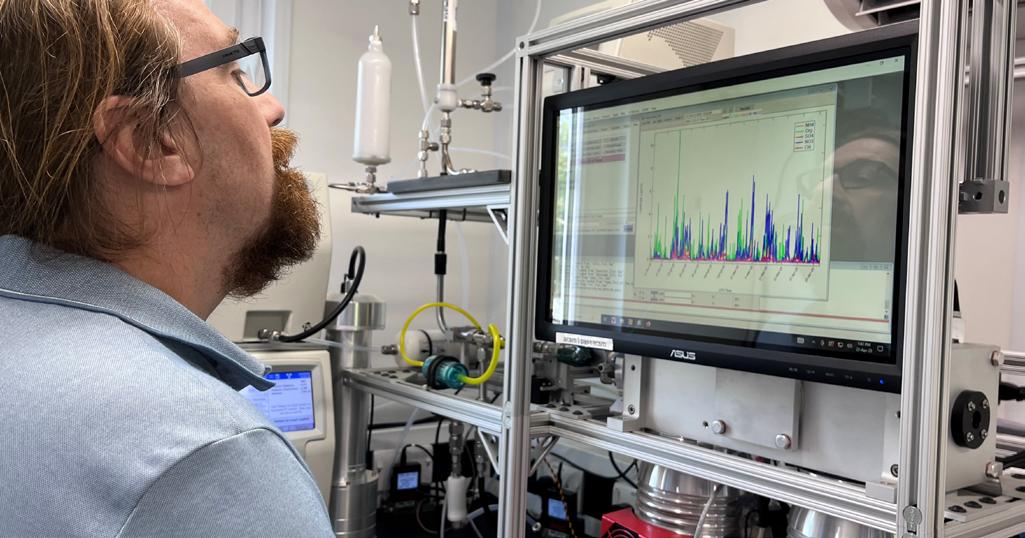
Hold on, this is counter-intuitive. Wood burning is a major source of black carbon, so how does that work? Fortunately, I’m asking the right man. “What happens is that when wood burns, the smoke that it emits has a brownish hue compared to black carbon that you would get, say, from diesel soot. So by comparing how much light it absorbs at different wavelengths, you can come up with an informed estimate of the amount of wood burning there is compared to, say, fossil burning.
“So that is something that people - not necessarily the general public - but what you might call the activists, can look at and say: ‘it’s a cold winter’s day, there’s a lot of PM2.5 out there… oh look, it’s wood burning.’’’
PM question time
As you might imagine, there are plenty of screens flashing up complex information and for the most part I chose not to investigate these arcane instruments, but one stood out, a machine that was reporting levels of PM4. It turns out this is the main metric used in occupational health research for workplace exposure limits. So when people talk about inhalable dust, they’re actually talking about PM4
On more familiar ground, James acknowledges that PM2.5, NO2 and ozone are the three main pollutants we all care about but everything on top of that is useful to add extra dimensions to the data. “And then we get things like this,” he says, affectionately (or did I imagine that?) patting a particular piece of equipment. “This is the really fun stuff from a research perspective. This is a metals analyser. Metals don’t necessarily contribute a big fraction of PM2.5 but they may have their own individual toxicological properties, or they may tell us something interesting about where it’s coming from. So as certain sources of pollution are starting to diminish, like the particulate pollution from vehicles exhausts, do we need to worry about other sources, for instance, the tyres or the brakes on those vehicles? Do we need to worry about wood
burning? Do we need to worry about industrial sources that we previously didn’t care that much about?”
The metals analyser examines both PM10 and PM2.5, making measurements of the metals present using a technique called X-ray fluorescence.
“What we look for is things like lead, which obviously not good for you,” James explains. “Chromium, arsenic, things like that are very interesting from a toxicological perspective. And then you have other things which are going to tell you where stuff’s come from such as potassium or iron.”
What would that tell you? “We know that wood burning emits a lot of potassium, just from potassium present in the wood. With brake dust, for instance, you’d expect things like iron, but brakes also have a lot of copper and barium in them as well, so you can really identify that one. There’s other kind of more esoteric ones, like emissions from ship’s engines which may have traces of vanadium in them.”
As we briefly mentioned earlier, the Supersites don’t just measure air pollution, their meteorological measurements are also important. There is an instrument looking at the structure of the atmosphere above us, using a laser, measuring the boundary layer height to see how well mixed the atmosphere is. There is also got a rainfall radar and equipment to take measurements of sunlight to see how much that’s influencing the chemistry of the atmosphere.
“We also monitor greenhouse gasses” says James, “and that’s of interest because they’re traditionally measured in the middle of nowhere, away from the pollution sources. But there is a lot of interest in the greenhouse gas emissions that you see within a city.
“We’re also measuring ammonia which is a big contributor to PM2.5 and also to eutrophication, providing excess nutrients to ecosystems. Most of the ammonia which is emitted to the
atmosphere is from agriculture but there is a lot interest in whether there are significant sources in urban areas that are less well characterised.”
It’s true, we don’t think of ammonia as being emitted from cities, so what are the sources? “You have things like municipal waste handling, household kitchen waste where you have rotten plant matter, even just some parkland with a duck pond – these are the more obvious things you might think of. But on top of that there is the use of selective catalytic reduction to reduce NO x emissions from diesel engines. Those catalysts use AdBlue. The idea was that you put the minimum amount possible in there, but they found that that wasn’t working well enough, so now they tend to overdose them, which increases the danger of ammonia slip, where the AdBlue gets converted into ammonia and comes out of the exhaust. There are various estimates of how big a problem that is, and we’re here to measure it.”
A burning question
We recently covered the effect of Bonfire Night on air quality in the UK, so I wondered how the event would be perceived by people using equipment this sophisticated, is it an annoyance?
“If I’m getting students to analyse data, the first thing I tell them to do is ignore Bonfire Night. Or not, if they want to see something really interesting. Fireworks use metals for colouration and stuff and so yes, the measurements just go absolutely crazy on Bonfire Night.
“There was one year in particular, 2014 so before this site came into existence, but we got a load of our existing instruments and set them all up measuring, just on the off chance we’d get something. But as it turned out that year saw a massive temperature inversion and the PM2.5 was massive in Manchester. We got multiple research papers out of it.”
Certainly, the data acquired here is nonpareille but it is this research that really elevates the supersites above the other monitoring stations in the UK. Multiple PhDs have used measurements from the Manchester site and in addition to his own students, James also welcomes other universities to the site. “Later this summer, we’re hosting some people from Leeds University. They’ve got this big instrument for studying peroxy radicals which is really important in atmospheric chemistry and is indirectly important for the air quality metrics.”
Future findings
So what next for Manchester’s Supersite? In terms of collecting data, is there anything that’s agonisingly out of reach right now? Of course there is: “There’s been quite a few developments in terms of ultrafine particles. It’s not that the measurement of ultrafine particles is new but some of the newer instruments are interesting.”
I suggest that in the future the Supersite will justify its existence by measuring different things to those measured now, but I wasn’t reading the room. “To be frank, you can get a lot of stuff just by making the same measurements for an extended period of time,” James counters. “You look at longterm trends and you can get more reliable statistics… It’s worth mentioning that the biggest source of variability in air pollution is the weather and that’s constantly varying. So if you want good statistics you’ve got to make measurements for a long period of time.”
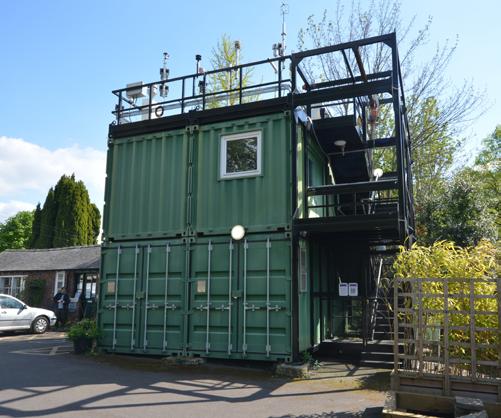
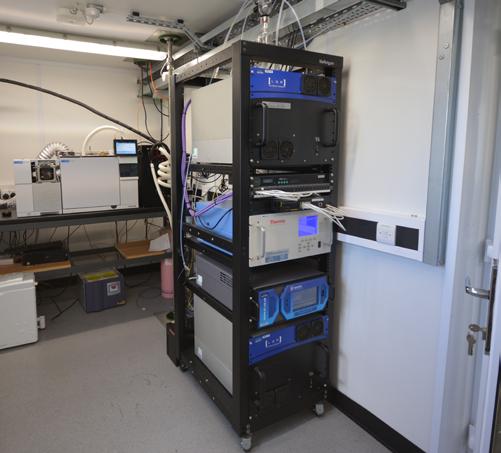

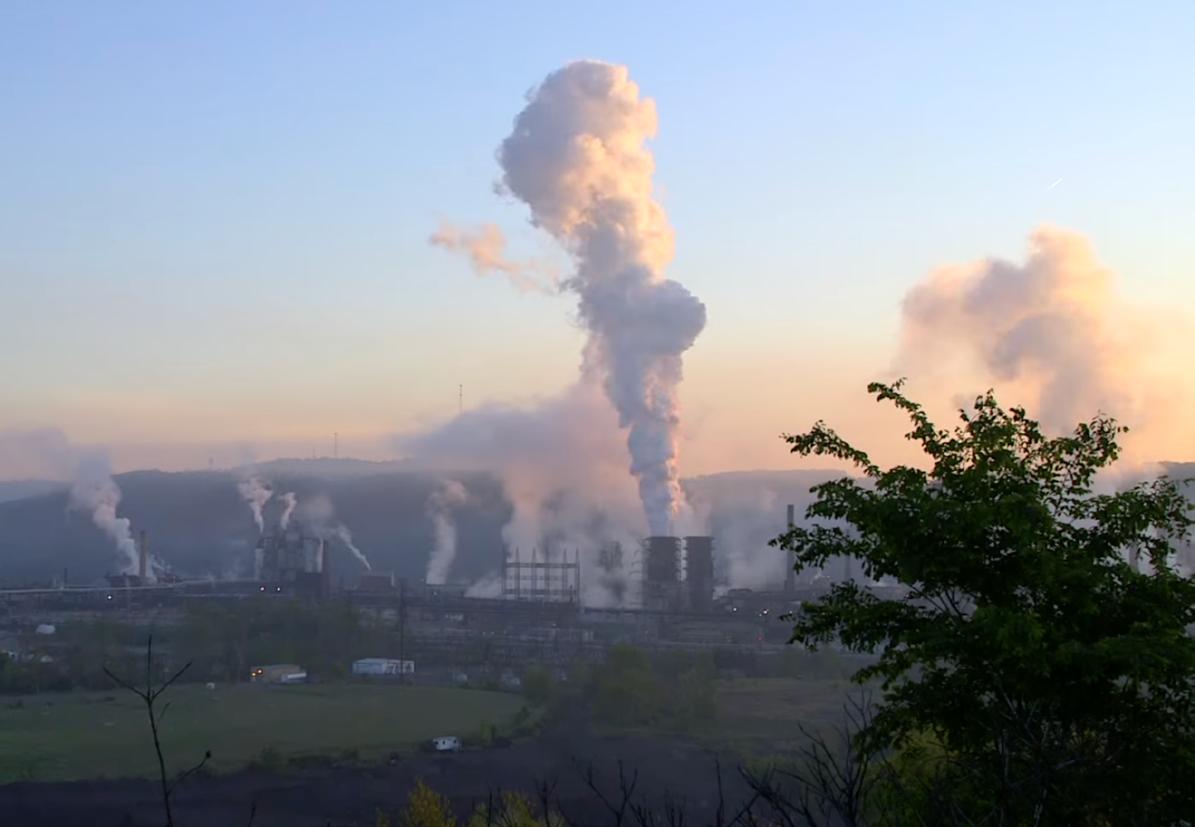
By Mark Dixon, Director/Producer of Inversion: The Unfinished Business of Pittsburgh’s Air
For his latest project, environmental film-maker Mark Dixon decided to document the air quality in Pittsburgh, a city he moved to in 2006. The film is a work in progress – click here to watch the trailer –but here Mark explains how he got to this point.
What is the moment a bud transforms into a flower? The process is often so slow that we don’t see it happen – we notice after the fact. With the aid of time-lapse photography, however, we can condense time and see the transformation at a pace that stirs the soul. It is not only beauty that grows more apparent with the compression of time; this is true of violence, too. I have spent the last nine years working on a documentary film called “Inversion: The Unfinished Business of Pittsburgh’s Air.” Inversion tells the story of a community in the Pittsburgh region struggling to address the slow violence of air pollution. Both the beauty and the violence of this story unfold very slowly in the real world, but it is my hope that the power of documentary film to condense time stirs viewers towards action, towards clean air, and maybe even a more liveable planet.
The slow-roll stories of environmental injustice have not always been my focus. It’s hard for me to pinpoint the exact
moment I became an environmentalist, but a little condensed retrospection might help. I didn’t take any environmental classes in college in the 90s. I shrugged off the suggestion that capitalism came at a cost. But then, in 2005, I attended Vice President Al Gore’s “Inconvenient Truth” lecture, outlining the climate consequences in store for us. At one point, Gore posed a question to the audience, speaking as a theoretical grandchild to all the people there. “What did you do,” my would-be grandchild asked me, “when you knew the true severity of climate change?”
I sat uncomfortably with that question through the rest of the program, trying to come up with an answer. What would I do? That evening I resolved to find an answer. I started exploring all things environmental. I went to the San Francisco Green Festival where I met people who had fully realigned their life and career aspirations with a liveable planet. This was the signal I needed.

I quit my job at a technology start-up, emptied out my schedule, and prepared for… well… I didn’t know what.
My younger but often wiser brother encouraged me to attend a silent meditation retreat before I made any major decisions. The retreat would involve no talking. No eye contact. Just ten days of inward reflection with occasional instructions from the facilitators. I took the challenge.
A few days into the retreat, the idea for a 50-state environmental road trip dropped into my head. This idea became my first film project: YERT - Your Environmental Road Trip (YERT.com). My old college buddy and his wife, Ben and Julie Evans, and I filmed our way through 50 states in 52 weeks, releasing piles of short films distilled from 600 hours of interviews with 800 people from all walks of life - activists, scientists, authors, dreamers, and everyday people-on-the-street. We ultimately released a feature-length documentary film that made its way to Netflix. YERT changed our lives forever.

“ These events unfolded gradually over months and then years. For the casual observer, it would be easy to forget what had been asked, what had been promised. My work as a storyteller was to condense the pivotal moments of slow violence and the beautiful community response into a clear and stirring film.”
Mark Dixon Director/Producer
As the YERT promotional tours waned, I found that nonenvironmental work was no longer satisfying, so I refined my filmmaking craft and cobbled together a living as an environmental filmmaker. In 2014, I created and released The Power of One Voice, a short documentary film examining the life of Rachel Carson 50 years after the release of her iconic book, Silent Spring.
In 2015, I crowd-funded my way to the Paris Climate Summit for COP21 as a citizen journalist. The climate crisis, I discovered, was even more dire than I had realised. I had to do more. But not in a “travel all over” kind of way. There was a piece of the climate struggle waiting for me at home in Pittsburgh: air pollution. You may believe that Pittsburgh has cleaned up its air since the dirty old steel mill days of the past, but ongoing pollution from heavy industry means that the air quality in our lovely city ranks quite poorly among municipal regions in the United States. I understood this viscerally. I regularly stopped short on my jogs or changed directions to avoid getting caught up in foul, rotten-egg-scented tendrils of hydrogen sulphide wafting across the region. I knew that the combustion of fossil fuels in aging industrial infrastructure was causing suffering in my chosen home while degrading the prospect of a liveable climate for everybody on earth. Here was a situation ripe for change. I decided to explore the issue with my filmmaker hat on.
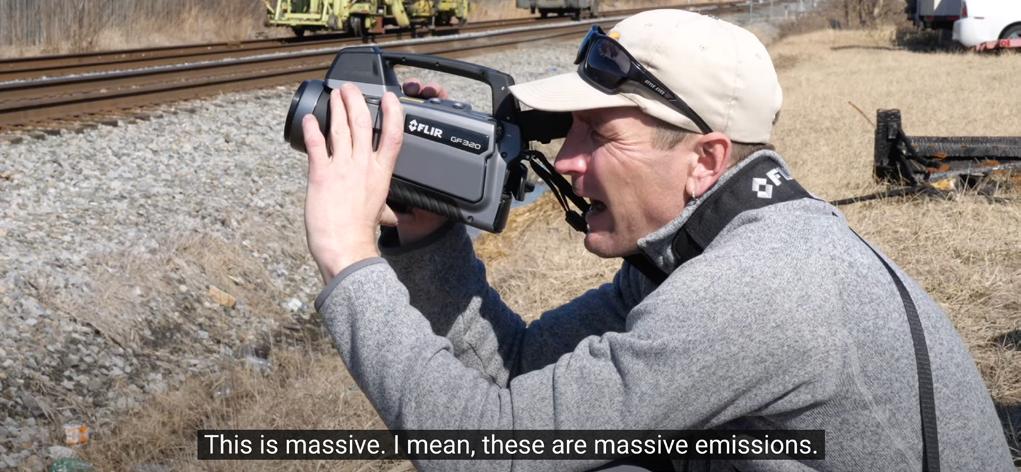
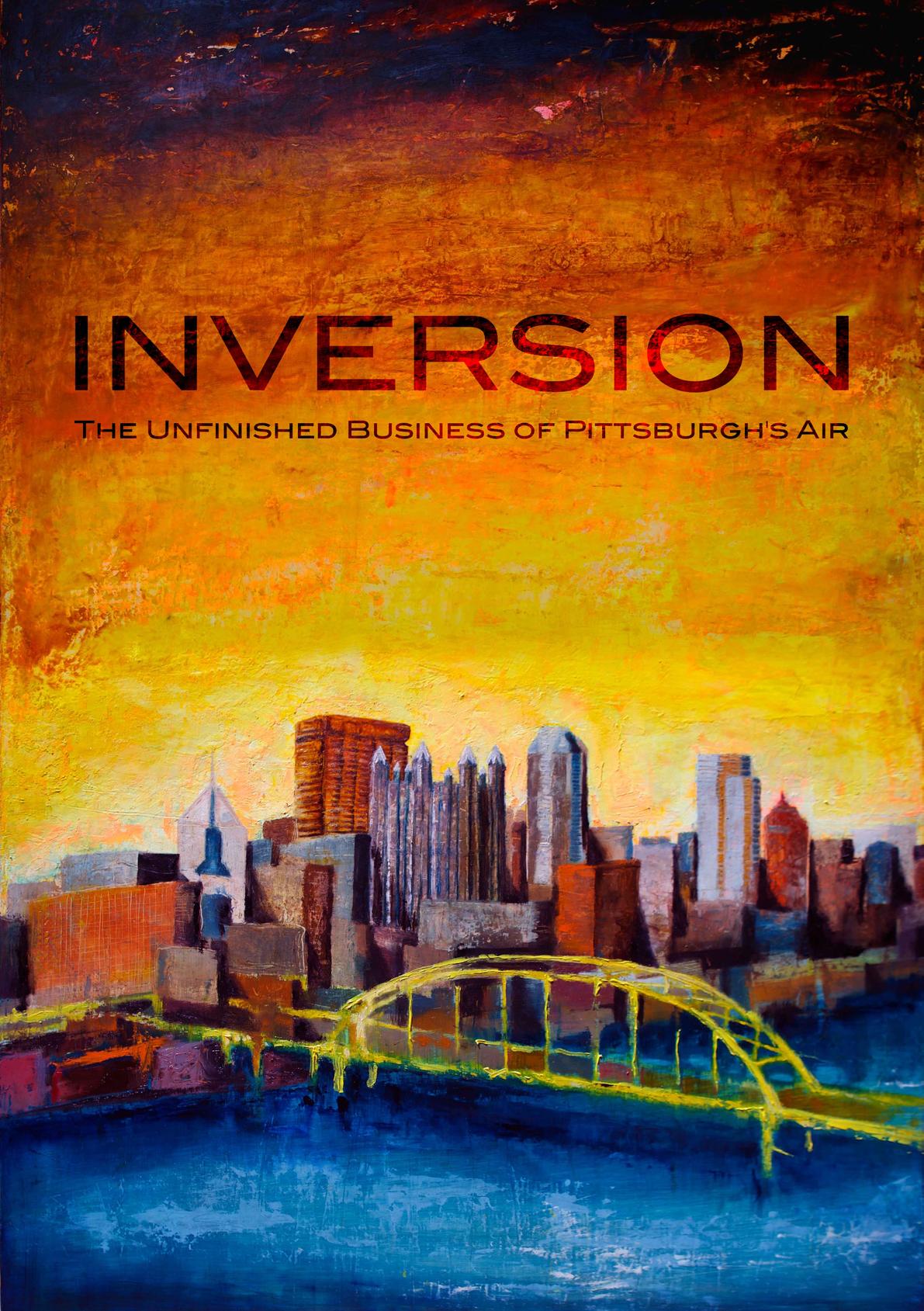
I started filming everything I could related to air pollution: rallies, lectures, town halls, and a whole lot of health department meetings. I started my work compressing the story. I released short videos of public testimonials, condensing long meetings into short sound bites that might motivate action. In Pittsburgh’s industrial heyday, air pollution was easy to see, as dark plumes spewed out of factories all up and down the Mon Valley. How could I help my neighbours “see the air” and the pollution in it, now that much of the visible smoke was gone? I found my answer in dozens of low cost monitors, spread across the region, that created a real-time air quality map. I embedded myself into a robust community of advocates, scientists, lawyers, foundations, and volunteers all working hard for clean air. They were working on smell reporting apps, cameras recording pollution emitted from industrial facilities, coordinating rallies and generally making the case for clean air every day.
But many politicians and community members alike were reluctant if not fearful to speak up about pollution. Over the past hundred years or so, industry had worked hard to build its own rich ecosystem of influence in the region. Then, on Christmas Eve of 2018, something happened that began to unravel that influence just a little. A fire broke out at the Clairton Coke Works.
The fire knocked out key pollution control equipment for roughly 100 days. Emissions of coke oven gas, a byproduct of steel manufacturing, are among the most potent pollutants considered by the EPA. US Steel was forced to explain what went wrong to the community and local government leaders. Air quality and health advocates now were joined by community members and even several politicians in criticism of the industrial giant in ways that had not happened before. This type of pollution was no longer acceptable. Our local regulator, the Allegheny County Health Department, found itself caught between a polluter unwilling to meet the requirements of its permit and a community unwilling to tolerate lawless pollution. These events unfolded gradually over months and then years. For the casual observer, it would be easy to forget what had been asked, what had been promised. My work as a storyteller was to condense the pivotal moments of slow violence and the beautiful community response into a clear and stirring film. What I am left with is the story told in Inversion. Soon, I will send it out to do its work, trusting that creative community members will learn from this story and walk away with new tools to improve the conditions where they live - in Pittsburgh and beyond, both now and well into the future.
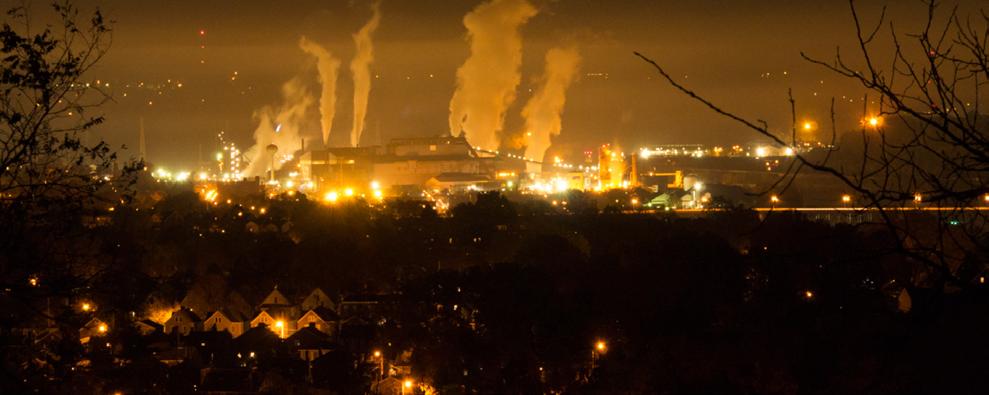
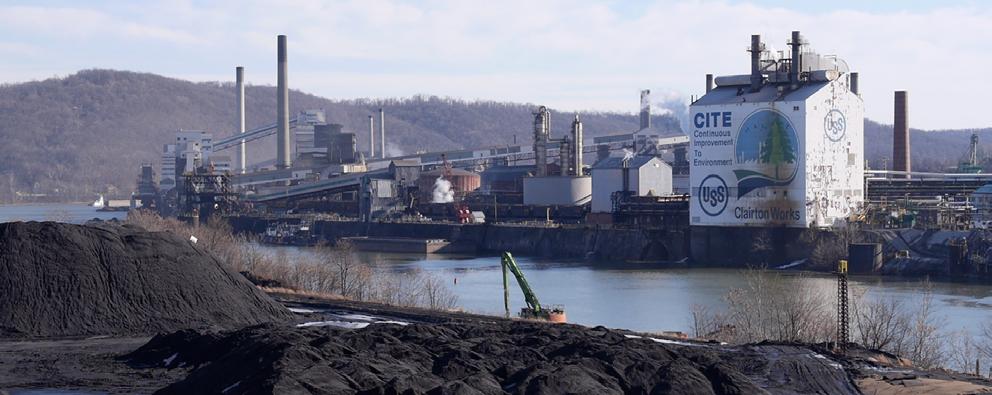
4TH NOVEMBER, PROSPERO HOUSE, LONDON
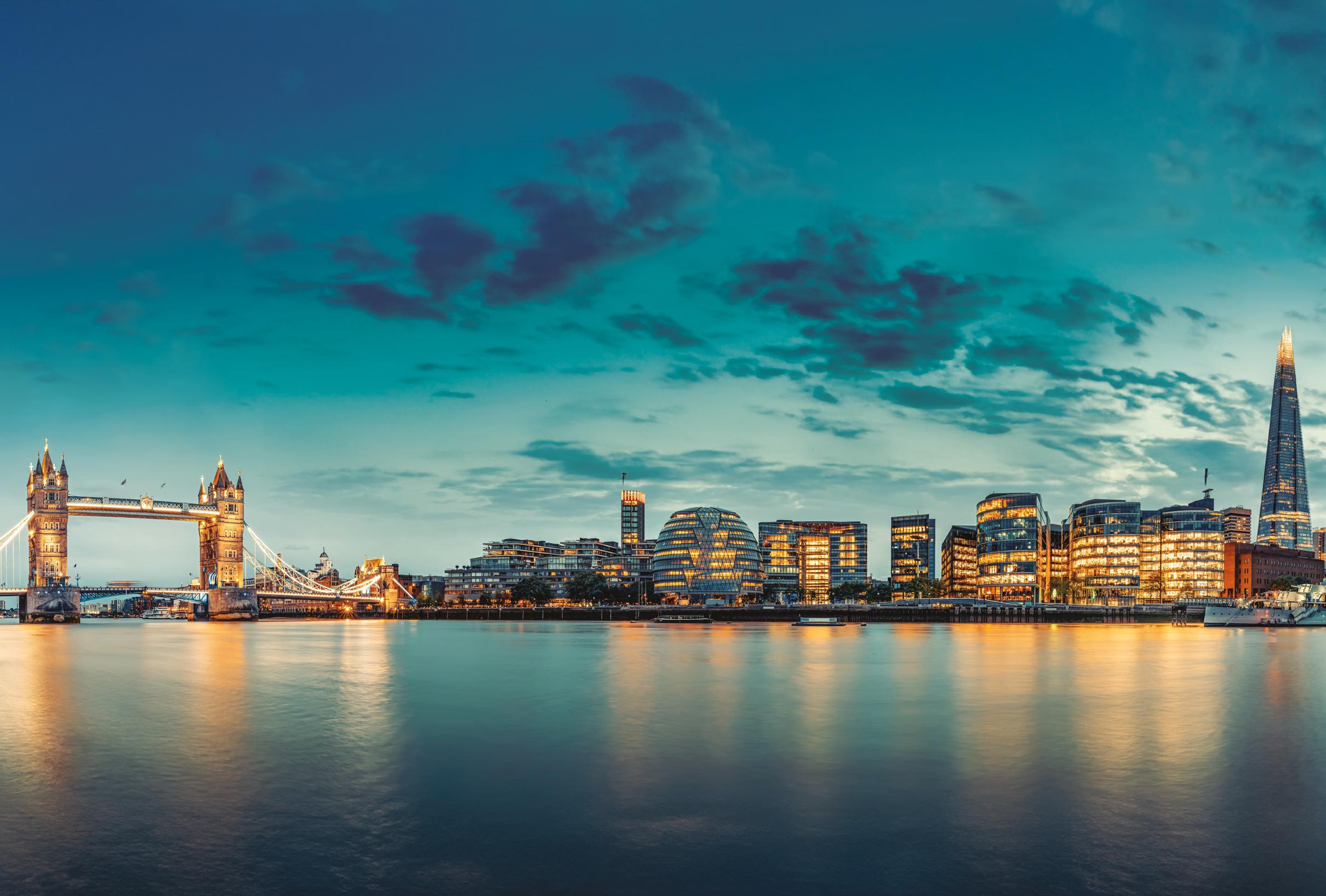
WITH SUPPORT FROM OUR EXHIBITING PARTNERS







WE ARE DELIGHTED TO ANNOUNCE THE LAUNCH OF THE 2025 NATIONAL AIR QUALITY CONFERENCE.
This will be our 6 th edition of the event, and as ever, we will be bringing together some of the most important policymakers & leading academics who are working on solutions to the challenges created by air pollution and clean air provision. Our first 3 speakers have already been announced:




REZINA CHOWDHURY
Deputy Leader of Lambeth Council
Rezina is responsible for action on the climate and ecological emergency and in advancing sustainable mobilities in Lambeth. She oversees the delivery of the borough’s climate action plan and Corporate Carbon Reduction Plan along with the delivery of Lambeth’s ambitious transport strategy.
NICK SMITH
Head of the UK portfolio at the Clean Air Fund
Prior to joining the Clean Air Fund Nick worked at the National Citizen Service, one of the UK’s largest development programmes for young people, where he held several roles, including Head of Strategy. Nick started his career in the private sector, working in strategy consultancy.
NICOLA PASTORE
Co-Founder & Director of Solve the School Run
Solve the School Run is a parent led charity that combines unique data insights with experience of real-world parent powered solutions to help families, local authorities and communities cut congestion and reduce road danger on the streets around our schools.
Early Bird tickets are only available for a limited time, so don’t miss out! Prices start from:
(for public sector tickets) £95+VAT
(for private sector tickets) £250+VAT
To find out more or book your tickets, scan the QR code or visit: airqualitynews.com/events/
We have limited availability for exhibition, sponsorship and marketing opportunities for this important conference. If you would like to get your company, brand and solutions in front of an engaging local government audience, please contact: Andy Lees | 07843 632609 | a.lees@spacehouse.co.uk

By Martin Guttridge-Hewitt, Journalist
Efforts to curb sulphur dioxide revealed more planetary heating than we thought and faster temperature rise. While this will be short-lived, Martin Guttridge-Hewitt learns how the skies above directly impact local climate conditions, and our policies must reflect this.
Numbers rarely lie. Nor do thermometers. But in this case, both have been misleading.
Between 1970 and 2008 our world experienced 0.18C of warming per decade. In December 2022, Dr James Hansen, a formerNASA scientist, presented a preprint study - peer reviewed and published the following year - projecting that temperatures could climb between 0.27C and 0.36C per decade until the mid-2050s.
Between 50 and 100% faster warming than we have been used to, recent years have consistently set new global temperature records so the idea rings alarmingly true as the bell tolls for hopes of limiting our planet to 1.5C above pre-industrial levels. In fact, Climate Path Tracker currently has us en route to 2.7 additional degrees by the end of this century.
Even if we avoid that, policymakers at local, regional, national and international levels must shift their position. This means developing more robust and comprehensive adaptation plans for warming now baked-in yet just beginning to make itself known, and the increase in extreme weather this will bring. But fit for purpose strategies need accurate data, and according to CICERO, one of Europe’s leading climate science bodies, this is a problem.
‘The main message we are trying to push is that air pollution has a much stronger local effect on climate than we probably realised,’ says Bjorn Hallvard Samset. ‘So air pollution, in general, has a cooling effect. That has been recognised for a while - it’s been cooling the planet by maybe 0.5C. Greenhouse gases are everywhere, and have an overall effect… Aerosols are much more regional. A lot of their effects happen where they are emitted.’
A Senior Researcher at Norway’s foremost climate science institution, Samset has spent most of the past 15 years focusing on air pollution’s role within the wider crisis. Air Quality News approached him after a recent investigation triggered headlines claiming a dramatic fall in lethal sulphur dioxide fumes over Chinese cities like Beijing triggered an acceleration in the annual temperature rise globally. In reality, it’s more nuanced and complex than that, and he’s keen to point out that none of this means we should abandon cleaning up the atmosphere.
‘Colleagues around the world have run 10 different climate models, each phasing out aerosol emissions one region at a time. For East Asia, which is really just China and a couple of other countries that don’t really have big emissions, the model matched what has
happened in the real world since around 2010,’ he tells us. ‘China’s war on air pollution and sulphur dioxide started around 2012, 2013. Between then and now, sulphur emissions have dropped by around 20 teragrams annually. Which is a really significant, sustained fall.
‘That means this change has now had time to start impacting our climate,’ he continues. ‘What we are finding is that the overall global warming effect - around 0.07C - is in itself not too big. That equates to around five years extra heating. But what’s interesting is when we look at the warming rate we’ve had since 2010, in several publications, including my own, it shows this is happening faster in the last decade or so.’
According to Samset, the fact that faster warming fits in with the timeline of China’s steps against sulphur is a positive thing. It means we understand why things have sped up and can more accurately predict how climate change, and specifically planetary heating, will play out in the coming years. ‘The alternative would be that there are some feedbacks in our climate system we don’t know about, and climate sensitivity is higher than we thought.’
Reassuringly, CICERO and a number of other teams, expect a slow down as the ‘China effect’ levels off. However, reasons to be cheerful come with caveats, emphasising our need to think carefully about, but act quickly on adaptation, in order to ready ourselves for incoming effects.
‘The more rapid climate change is, the less time we have to prepare,’ says Samset. ‘We are talking about reducing air pollution, which is easy to do in the context of mitigationwe’re reducing emissions in general. But how do we adapt to the change that’s already here now, and the changes we know are coming? First of all, this starts with accepting the need to adapt. Not everyone has done this yet.’
That doesn’t just mean bracing for warmer temperatures, and this is where things begin to get greyer. In areas where air pollution has been high enough to balance the impact of greenhouse gases, the two have likely been confused. Extreme rainfall, for example, is often dominated by air pollution rather than other potential contributing factors, like carbon, as has often incorrectly been assumed.
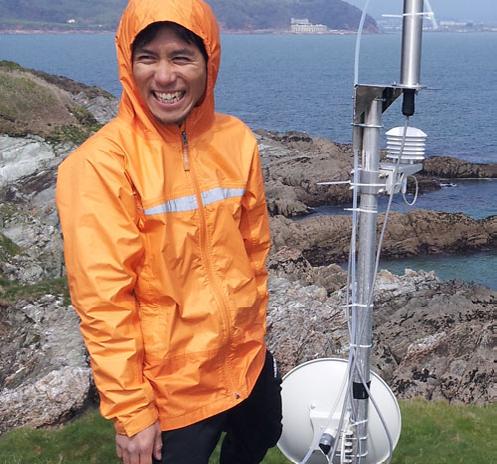

Bjorn Hallvard Samset Researcher “ The more rapid climate change is, the less time we have to prepare.”
‘Policymakers should definitely work to remove air pollution, but then adaptation has to reflect this. Every country around the world now has climate projections, but these must take into account the aerosol gas patterns, and effects, alongside greenhouse gases,’ says Samset. ‘If we do this then we’re well on our way.’
The impact of China’s efforts to bring sulphur dioxide down is apparent. In contrast, another big drop in the gas is only beginning to play out. Since 2020, the International Maritime Organization [IMO] has mandated an 80% cut in the maximum acceptable sulphur emissions from shipping. A smaller scale change than China’s policy, southern England’s Plymouth Marine Laboratory still says the effect will be noticeable.
‘Atmospheric sulphur levels over the last decades have continuously declined - a good news story for air quality,’ says Dr. Mingxi Yang, Principal Scientist at the Plymouth Marine Laboratory who led on the organisation’s ACRUISE work around shipping, sulphur and global warming. ‘However there’s a temporary downside to this decline in sulphur, because such aerosols are very efficient at controlling clouds and radiation. The reduction in sulphur emissions post-2020 has led to increased solar radiation reaching the surface, so more surface warming.
‘The maximum fuel sulphur content was 3.5% by mass pre-2020, and the actual mean fuel sulphur content of the global shipping fleet was about 2%. Now the actual mean sulphur content is around 0.5%, as mandated - about a four-fold reduction,’ he continues. ‘Based on this, I don’t anticipate large, further reductions in sulphur emissions in the near future. However, as the Gettelman et al. 2024 paper indicates, the full extent of warming due to the IMO 2020 reduction has yet to be felt due to inertia in the climate system.’
Although Yang nods to a pronounced rise in Northern Hemisphere surface temperatures since 2022, this cannot be explained through shipping regulations alone as the ripple effect of this sea change will play out over the next five years. It is expected to peak around 2030.
He also tells us that, due to the overwhelmingly longer lifespan of carbon, decarbonisation must continue to be the priority for shipping and other sectors because this remains the key warming contributor. Of course, that’s easier said than done, as proposed alternatives to fuel stocks ‘such as hydrogen, ammonia and methanol all have their limitations’. Not to mention ‘potentially significant environmental impact’.
Just as worrying as the poorly understood ecosystem implications of these nascent energy sources are the relatively unknown effects on human health. But one thing is clear. Our route from here must be plotted with the minefield of hidden trigger points we are currently navigating kept in mind. The long-term must be prioritised over quick fixes, whether that’s plans to adapt, mitigate and prepare for what is happening - now at a faster pace than previously thought - or a just and feasible roadmap for transitioning away from carbon fuels and economics.
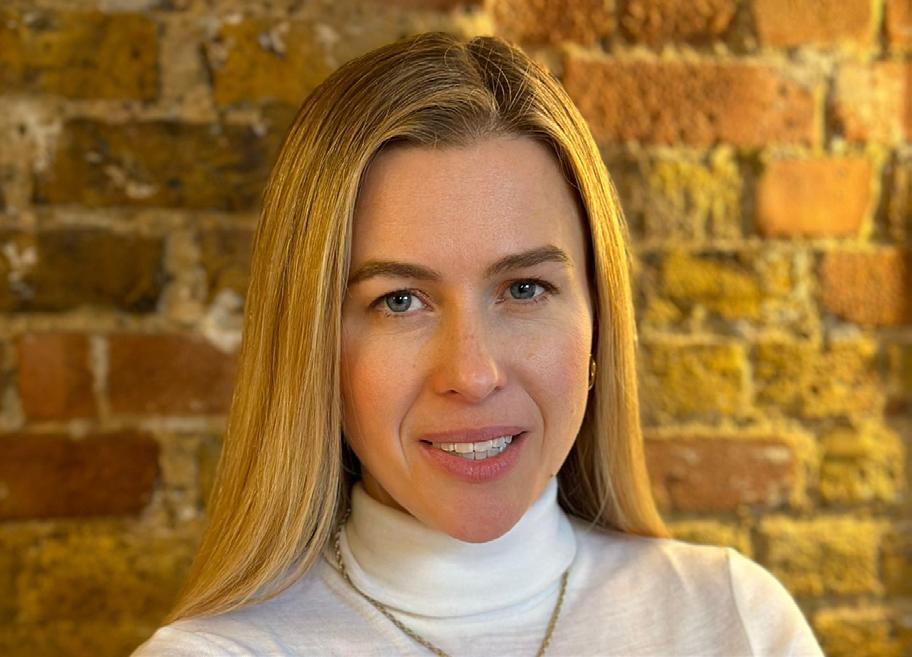
Solve the School Run (SSR) is a charity that is working to reduce school run traffic in a bid to protect parents and children from harmful emissions. Nicola, who has been campaigning for better air quality in London over the last seven years, founded the charity with her friend Claire McDonald and they launched it two years ago.
Interview by Emily Whitehouse, Journalist
Before Solve the School Run you worked in data analytics for 15 years. What prompted you to become involved in air pollution?
When I gave birth to my first child I started worrying, like a lot of parents, about all the harmful emissions they could be exposed to. However, I didn’t become fully involved until I then had more children and started doing the school run.
Our local primary school is only around a 700 metre walk from where we live, and it is surrounded by congested cars. The school’s playground is also situated near two B roads and when I first arrived at the school to drop my children off, I remember thinking it was absolutely flanked by congested cars. The whole situation left me feeling really stressed about the walk to school because of the road dangers and air pollution risks.
The shock is what activated me to start campaigning for change locally and given my background, I realised quickly that data was going to be really essential if we were going to make a point to councillors and our cabinet office about why we need to change the school run for families.
Did you become aware of air quality problems when you started doing the school run, or were you aware beforehand?
When I fell pregnant the first time, I read a lot of articles about how air pollution can impact your unborn child, and I started to worry a little bit because my old office and where I lived was by a main road. We were based in Brixton, which was incredibly polluted.
During my maternity leave I met Jemima Hartshorn, who founded Mums for Lungs, and we would go for walks with our babies together and be so shocked about how polluted all the surrounding roads were.
However my concerns around air quality really grew during my second pregnancy. My daughter was born two months premature and after doing some research I discovered that there are correlations between air pollution and children being born early and low birth weight.
I experienced something called a placenta abruption, which is one of the most serious birth issues you can have. It’s never been confirmed that air pollution caused this, but it has always been in the back of my mind and definitely had a lasting impact. After doing some research, I found I didn’t have any of the risk factors associated with the condition, but there was evidence to suggest that pollution can contribute to it, and this really stuck with me.
By the time my children started school I was already worried that we had been impacted by air pollution, however after I saw them surrounded by a lot of traffic the feeling was exacerbated, and I started to think about what these conditions could do to their long-term health. How did Solve the School Run come to life?
Six years ago I started campaigning for cleaner air and safer streets outside of my son’s primary school, but as I had more children, I became for involved with air quality during my maternity leaves.
Returning to work after my third maternity leave, I realised that I had become passionate about air quality and safer streets and that I wanted a career change. So, two years ago I left my day
job to set up the charity, which now helps other parents who have the same concerns as me.
Are there any skills from your old job that have helped you in the charity?
Definitely. My background in data analytics and corporate consulting all started from the premise of, how do you use data to make better decisions?
When you’re doing that, you not only have to measure what you’re actually trying to change, which in this case is air pollution, but once you understand that you then need to start measuring the upstream drivers of what’s causing it.
I’ve always worked with this approach in the private sector and there’s absolutely no reason as to why it can’t work in this field. For example, local air pollution monitors showed us that air pollution in our area is at unhealthy levels. But what is causing it? We used our data expertise to publish research in January that showed that the school run causes massive spikes in air pollution in our area. During term time nitrogen dioxide increased by 50% and public bus delays increased by 50% between 8-9am, which signals to us that the school run is a huge driver of congestion.
From this, we started modelling school run traffic in London itself. The work was funded by the Foundation of Integrated Transport and can be found on our website in an interactive dashboard. You can select a London primary school, ward or borough and see how far children are traveling to school, and how they are most likely to be travelling.
This tool helps councils, and anybody invested in the area, like parents or campaigners, access data and insights they need to implement safer measures such as school streets or crossings.
You founded Solve the School Run with Claire McDonald. How did you both meet?
Our children went to the same primary school, and we campaigned for a school street together. I remember thinking about how passionate she was about clean air because not only was she working to try and implement a school street, but when we met, she was also doing a masters in environmental psychology.
She’s just brilliant. Claire and I are co-directors of Solve the School Run, and we work really well together. While I’m in charge of the data side of things, Claire is an ex-journalist so she’s really great at translating the results we find and writing them up into easy to understand, yet impactful messages that resonate with the public.
For example we have an interactive tool on our website that is very granular and can be used at multiple levels. So a school mum could use it to understand how many children are travelling sustainably to their school, to make the case for a zebra crossing or a school street. Or a council officer might use the borough level insights on how many pupils are being driven to schools as part of their school active travel and school street program planning. These are two very different cases and finding the simple, key messages from the data that resonate can be hard, but Claire is really skilled at this.
Claire also leads a lot of our campaigns and in general, she’s just an excellent partner in crime.
When you first set up the charity did you have a specific goal in mind?
Absolutely. We have the vision that a safe, clean and green school run should be enshrined in every child’s right. Whether that’s a school bus, a safe cycle to school, or a walk up the road, children shouldn’t have to risk their lives or their lungs just to get to school.
Additionally, when you’re setting up a charity, you also have the goal to be able to make a living from it. There is a practical goal of getting funding and getting the right resources and although there’s still quite a long way to go, I’m really proud of the progress we have made.
“School run traffic is quite unique in the dense timeframe that it happens. If you imagine there’s 480,000 car trips doing the school run each day in London, they all predominantly happen between eight and nine in the morning.”
Nicola Pastore
Another huge goal we helped deliver was the school street around our local primary school. It went live last September after five years of campaigning, and it has become one of the most complex and ambitious school streets in London. It filters two kilometres of road space and has four ANPR cameras that protect two schools. One is one of the boroughs biggest primary schools and the second is the SEND school next door. The road also previously had around 800 cars on it during peak times, so the new scheme has been transformational. We’ve actually written up this experience on our website as an incentive for people thinking about campaigning to make a difference in their area.
Looking back, it’s crazy to think that our now charity was once just a small local group campaigning for clean air around Rosendale Primary School. We’re all really proud of the progress we’ve made, especially the fact that we have just won a Lambeth Civic Award. Congratulations on your award! Since starting your charity, would you say the reaction has been positive?
I would say it has been pretty positive both locally and across London. Will Norman who is London’s Walking and Cycling Commissioner, has picked up on some of our facts around the school run, such as it can cause 480,000 car trips in London per day. The fact that such a high authority figure is noticing us, hopefully will increase our call for action.
The research we released in January about the air pollution caused by school run traffic made national news and like most things to do with traffic, it showed that it can be a particularly divisive topic. There is a lot of consensus around the fact that children shouldn’t be exposed to pollution or road danger on their way to school.
And we know that almost 50% of parents who drive the school run wish they didn’t have to do it, before air pollution is even brought into the mix. So ultimately everyone wins if we can enable children to get to school sustainably, safely and independently (without their parents) but there is a long way to go to get there.
Part of our findings in our research showed that in our area, the private school term time, in particular, was problematic, increasing air pollution by 27% compared to when state schools were in session. So this brought another controversial element into the mix. Private schools select pupils from beyond the local area, and therefore families have further to travel, and driving rates are higher. Some state schools, like faith schools or grammar schools, can also have wider catchment areas and therefore higher driving rates compared to schools with shorter pupil travel distances.
Can you tell me why you decided to conduct this research and what you found?
Before our school street came into force, it was empirically clear to us, and to a huge number of people that live in the area, that during school term time the roads were absolutely chock-a-block.
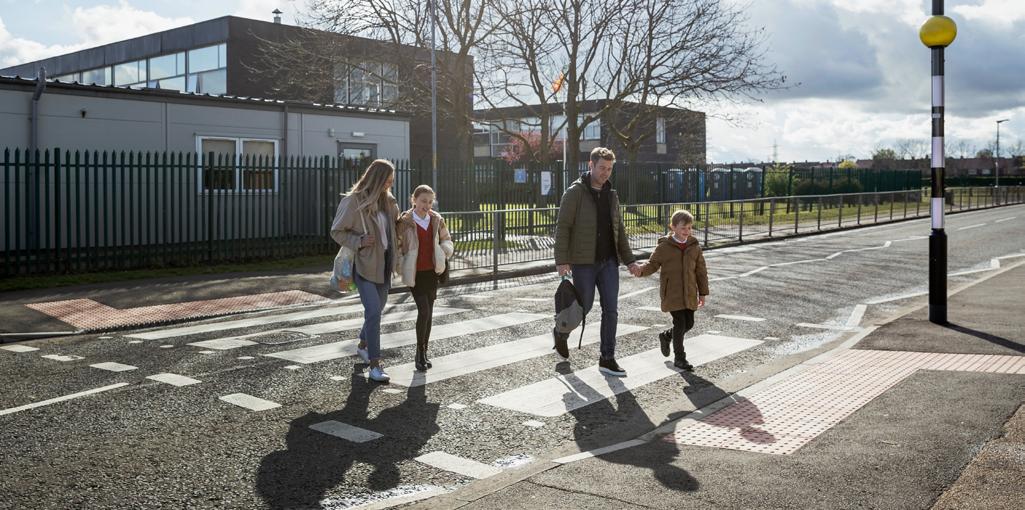
In our local area we are surrounded by a lot of schools, both state and private, and there are around four weeks in the year when the children at the state primaries are in session, when the other private schools in the area aren’t. It was almost like a eureka moment for people when there was such significantly less traffic on the roads.
Now, this is partly due to the fact that there are obviously less people driving in the area, but there is also the secondary impact that I then researched. School run traffic is quite unique in the dense timeframe that it happens. If you imagine there’s 480,000 car trips doing the school run each day in London, they all predominantly happen between eight and nine in the morning, and what that does to our road network is push roads over their capacity, which can very quickly create backlogs. So, it’s both the number of cars doing the school run and the very tight timeframe that create this congestion effect.
Very early on we could observationally see this trend, but we wanted to see if it could be proved with data. Around two or three years ago we did a bit of back of the envelope analysis which did show that the school run had a massive effect on congestion, but we recently got a grant from the Foundation of Integrated Transport to expand on it. In this project we were able to use air quality monitors to better understand the correlation between the pollution and bus delays that were caused by the school run during term times. We found that congestion and air pollution increased when state schools were in session and then increased even more when the private schools in the area also returned. Although this wasn’t a surprise to me at all.
During the school, children and adults aren’t outside for long periods. How much can emissions from traffic actually harm them?
It’s true that they’re not outside for long, however our research found that traffic during the school run can increase air pollution by 50%. It can be more or less in other areas, but this statistic is far from small.
There is also some research from the University of Surrey that shows it takes time for air pollution, particularly around playgrounds, to dissipate. So, although pollution caused by school run traffic only occurs within a one-hour timeframe, it definitely lingers for longer.
If you also think about the seasons and a child’s day, during winter the walk to and from school is usually some of the only time they get outside and can enjoy some fresh air. It is really unfair that this experience should be mired by them risking their lungs and potentially exposing them to long term health problems such as asthma.
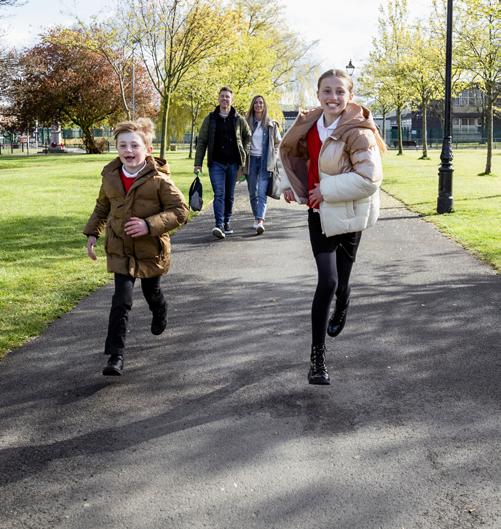

WEBSITE:
NEWSLETTER:
EMAIL: www.solvetheschoolrun.org
Currently your charity is based in Southeast London. Do you have any plans to expand?
Our goal at the moment is to encourage more people in London to use our data tools and make them more aware about how dangerous school traffic can be. However, once we feel as though we’ve got a scalable model and impactful programme, we’re keen to expand to other parts of the country.
Since setting up Solve the School Run what are you most proud of?
I think I’m most proud of our key findings regarding the London school run and our data analytics tool which sits with it. I think it’s going to be really impactful in enabling people to make change in this area and I think that if we want to change how children are travelling to school, we need to be measuring air quality and providing much more granular data on it. This is absolutely part of our ethos.
I’m also quite proud of how our goals have changed. When we first started the charity, our original goal was around trying to highlight the discrepancies in school run traffic. We focused on schools with large catchments because they’re going to have more of an impact on driving than schools with smaller catchments. However this problem is now just one of the systemic issues we focus on. Our goal now is simply to enable children to have safe, clean and green school journeys no matter where they live.

Nicola has been confirmed as one of our speakers for this year’s National Air Quality Conference in London.
So, if you have any questions about Solve the School Run or you want to know more about it, you know where you can find her.
By Simon Guerrier, Journalist
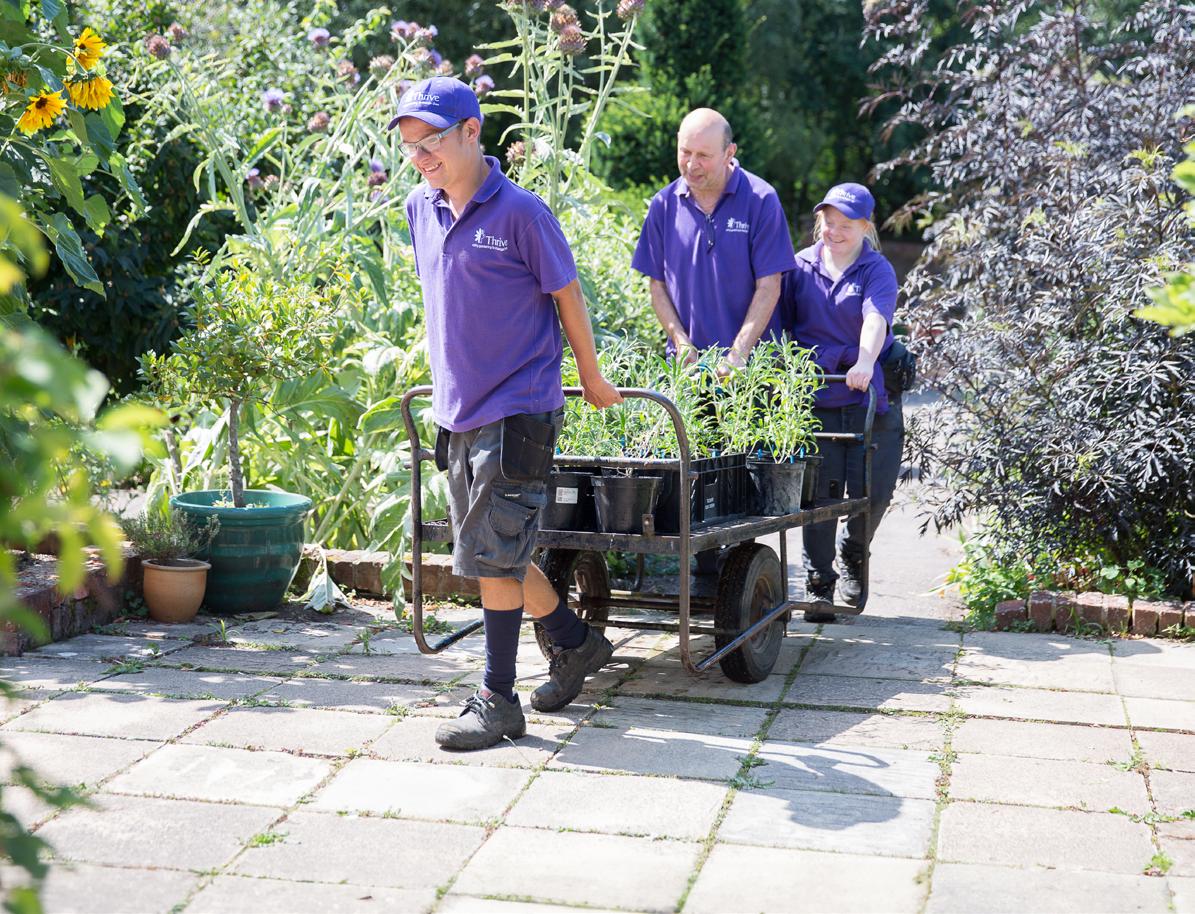
Getting out into the garden is good – and can be an effective treatment for ill-health. The team at charity Thrive tell us about the science of therapeutic horticulture…
Last issue, we explored the science behind something I was constantly told as a child: that I should turn off the TV or computer and go outside as the fresh air would do me good. These days, my mum still thinks I should put aside the laptop occasionally and find something to do in the garden. ‘It doesn’t matter what,’ she tells me. ‘Just get your hands into the soil.’ Is that idea backed by science, too?
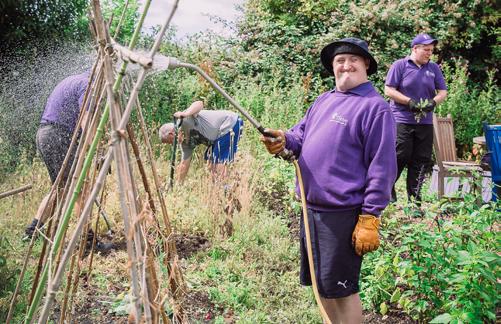
To find out, I spoke to Ben Thomas, the CEO of Thrive, a charity that focuses on the health benefits of gardening. For more than 40 years, Thrive has helped people with disabilities and long-term health conditions, as well as training the care professionals and teachers who work with them. The charity also provides resources to help people with long-term conditions to garden at home.
‘Our clients are referred to us by their doctor or social worker,’ explains Ben. ‘Our trained practitioners then tailor gardening activities to their specific needs and goals. We use an approach called “social and therapeutic horticulture”, or STH, which is highly effective. It’s a proven model of care outside a hospital setting.’
That ‘proof’ is what I’m after.
‘There’s a large and growing body of evidence on the benefits and efficacy of this kind of approach,’ says Ben. ‘There have been randomised control trials, meta-analyses and small-scale evaluations of social and therapeutic horticulture.’
For example, in 2023 the government published work conducted by IFF Research that found a sizeable appetite among clinicians and the public for ‘green social prescribing’ (GSP). That supported the findings of an earlier review conducted by Natural England of nature-based interventions for mental health care.
The team at Thrive monitor this kind of work closely. ‘Some studies look at groups with specific health conditions or demographics,’ says Ben, ‘while others are more general.’ Thrive, he continues, has often, ‘played a key role working with researchers to build and share the evidence base.’ The charity’s own research reveals that 95% of people who take part in its programme have seen an improvement in their mental and physical health.
‘Thrive supports and works with a wide range of people,’ says Ben. There are, ‘those who have a physical or learning disability, people with mental health support needs, people who may have sensory loss or autism, and people with conditions such as dementia, heart problems, diabetes or stroke survivors. There are also young people who have social, emotional or behavioural difficulties.’
Taking part in Thrive’s therapeutic programmes has been shown to reduce stress and anxiety, while at the same time providing a renewed sense of purpose and achievement. Other outcomes include strengthened muscles and improvements in co-ordination, dexterity, motor skills and balance. Participants also develop skills and lasting friendships.
Ben can provide a particular example. ‘While staying with a friend overnight, Stephen woke up to find himself lying on the floor unable to move or speak,’ he tells us. ‘Stephen was rushed to hospital, where the doctors immediately diagnosed a bad stroke. Despite receiving lifesaving treatment, he had a long and difficult recovery ahead.

‘For six months, Stephen was hospital bound as he re-learnt how to walk and talk,’ Ben continues. ‘He feared that he would never walk again, describing this as the worst time of his life.’ That changed once he began a programme with Thrive. ‘The benefits included increased stamina, improved mental health and – most importantly for Stephen – friendships.’
‘Coming to Thrive has made the world of difference to my recovery,’ says Stephen himself. ‘It gives me a sense of purpose and a reason to get up in the morning.’
The programme rekindled Stephen’s interest in gardening. ‘But no prior experience is necessary,’ says Ben. ‘We work with people who used to be active gardeners and with those with little to no interest or connection with nature. Our focus is on providing access to time in nature, meaningful activity and positive social environments. Those are the things that enable them to improve their physical, social and emotional health.’
Access to nature means clients are exposed to the elements. Is your work affected by the weather or is the sensory experience of going out in the wind and rain part of therapeutic gardening?
‘Less so than you might think,’ admits Ben. ‘I was in our garden near Reading yesterday and there was a significant downpour. The water table is currently quite high so there isn’t much that can be

“Residential gardens are the third highest use of land within the UK. Plants can reduce the level of air pollutants and growing your own food can reduce carbon footprint as well as support healthier eating.”
Ben Thomas CEO, Thrive
done on the beds. Even so, our practitioners and clients were seed sowing in the indoor areas – getting seed potatoes ready.’
Though he says work is dependent on the weather to some extent, indoor areas including poly tunnels and glass houses ensure that programmes are accessible whatever the conditions outside. That lead us to the issue of air quality. ‘We shouldn’t underestimate the potential impact that getting more people gardening could have,’ Ben enthuses. ‘Residential gardens are the third highest use of land within the UK. Plants can reduce the level of air pollutants and growing your own food can reduce carbon footprint as well as support healthier eating. When done right, it supports local wildlife, providing both habits and food.’
The charity’s programmes help encourage this kind of activity. ‘I was talking to one of our client gardeners in London this week who was telling me that the confidence, skills and interest they gained from being at Thrive has led them to taking on an allotment.’
But Ben also cites the Green Care Coalition’s survey of 185 organisations offering gardening for health and well-being programmes in England and Wales. ‘That found that 39% of settings were community focused – they were community gardens, farms, allotments and so on. Without active management, many of these spaces would not be able to offer the wider community the opportunity to spend time in nature and access the restorative benefits that it brings.’
Organisations such as Thrive, for all the benefits they bring, are very localised. ‘To get real scale we need significant and sustainable investment,’ says Ben, who thinks this would offer genuine value for money.
‘The health and social care sectors are overstretched. Therapeutic gardening programmes cut demand on our health services by providing huge health and well-being benefits. We need sustainable funding models to enable more people to access nature-based activities.’
Thrive is part of the Therapeutic Horticulture Stakeholder Group, which is working to remove the barriers to scale. ‘We are building on and disseminating the evidence, and training more practitioners. We’re also working with Trellis to develop a new Association for Social and Therapeutic Horticulture, which will improve standards and remove key barriers to commissioning programmes.’
Should ‘Get outside’, then, be included in existing NHS guidelines on how to be healthier and happier? ‘I think we would suggest phrasing it as “Spend time in nature”,’ says Ben. ‘But yes, get outside. Even better, get gardening.’
By Imogen Pass, Ossila
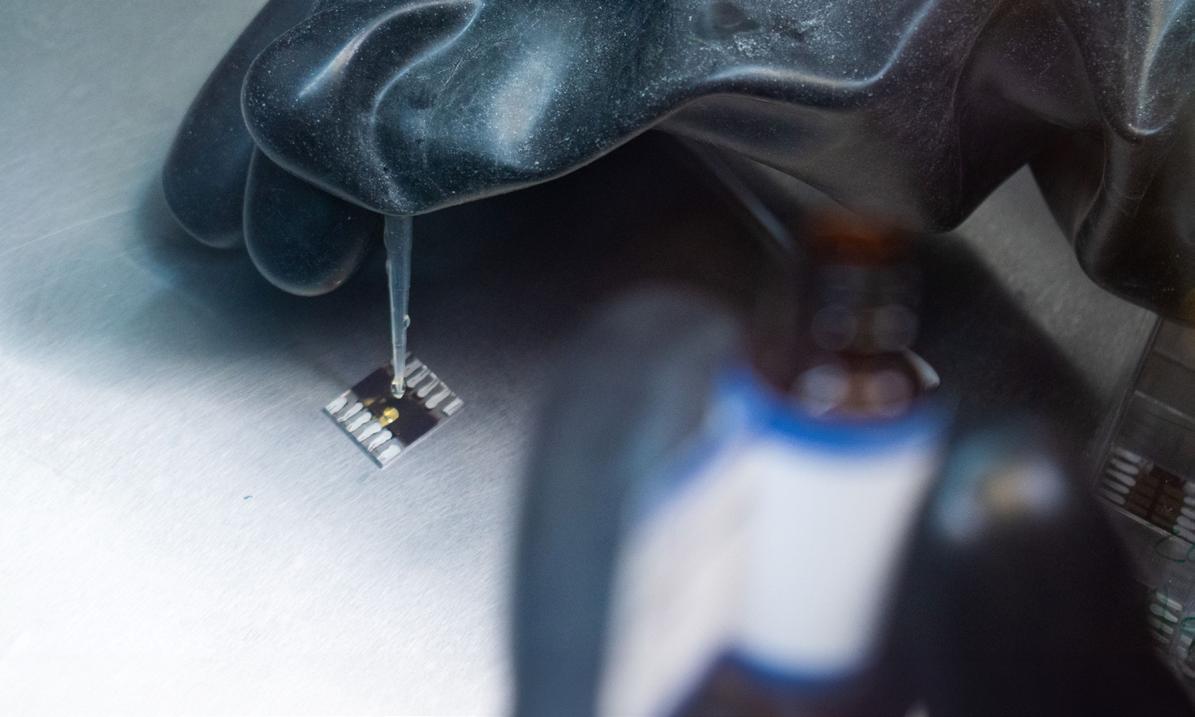
The world agrees that solar energy is crucial in tackling climate change. The International Energy Agency reports that investments in solar now outpace all other power generation technologies combined. Part of this investment is focused on developing new solar technologies, like flexible solar cells.
Lightweight, durable, and self-powered, flexible solar panels are easier to integrate into a wide range of new applications and existing technologies. By simplifying solar energy adoption, flexible solar panels could make renewable energy more accessible than ever, driving its integration into everyday life and guaranteeing energy security.
What’s Wrong with Traditional Solar Panels?
Since 1954, crystalline silicon solar panels have become the industry standard, capturing 95% of the market thanks to their efficiency and reliability. Despite their success, silicon solar panels have a key limitation: they are rigid, heavy, and spaceconsuming. This is due to the material properties of silicon. While silicon can absorb light and convert it into electricity, fundamentally it is not the ideal solar material. Its material properties of cannot be altered, so the only solution is to use a relatively thick layer to maximise the amount of light absorbed. As consumer devices become more portable and the demand for seamless energy integration increases, the limitations of silicon solar panels are more apparent. Flexible solar panels, using alternative solar materials, are now being explored, opening the door to better renewable energy integration.
What’s So Great About Flexible Solar Panels?
Flexible solar panels are more lightweight, less bulky, and – of course – flexible unlike traditional solar panels. They can be used in a wide range of applications that would be unsuitable for rigid silicon solar panels. Their smaller, flexible footprint makes them easier to transport and install as they impose significantly fewer structural demands on the surfaces they are mounted to.
Even in production, flexible, thin-film solar cells have an advantage. They can be manufactured using techniques where solar materials are printed or coated onto flexible substrates as a solution. These techniques are cheaper and lower energy to implement than the manufacturing process needed for silicon solar panels, and many can easily be scaled from research settings. Plus, there is much less material waste compared to silicon processing.
Every component needs to be flexible, including the photovoltaic material (which converts sunlight into electrical energy). The photovoltaic material also needs to be stable, durable, and efficient at converting electricity when flexed or bent. Right now, there are several exciting photovoltaic materials that could meet these requirements.
Perovskites are materials with a distinctive crystal structure. When the right organic and inorganic materials are combined in this structure, it creates an efficient semiconductor. Since 2009, perovskite solar cells have rapidly improved, reaching 30.1% efficiency – comparable to silicon, which took nearly four decades to achieve similar results. Another benefit of perovskite solar cells is that they can absorb light more efficiently that silicon. Even in very thin layers, they can be highly absorbent, which makes them suitable for flexible solar panels. The potential for flexibility and impressive performance make perovskites a prime candidate for next-generation solar panels. Another material category that could be used is organic photovoltaics. Made from polymers or small organic molecules,
they offer high absorbance, flexibility, low toxicity, and low manufacturing costs. Easily coated or painted onto substrates without requiring high temperatures, organic photovoltaics are highly compatible flexible plastic substrates which cannot withstand very high temperatures. While the record efficiency of organic photovoltaics is not as high as perovskites, their environmental benefits and adaptability keep them in active development.
Alongside organic photovoltaics, dye-sensitised solar cells and quantum dot solar cells are being explored. Dye-sensitised solar cells have only achieved efficiencies of 13% while, so far, quantum dot solar cells have achieved comparable efficiencies to organic photovoltaics.
Flexible solar panels using a material called copper indium gallium selenide are already available commercially. However, they are more expensive and less efficient than traditional silicon or emerging perovskites solar cells, limiting their adoption in cost-sensitive markets.
New materials, such as perovskites and organic photovoltaics, have issues with stability and durability which must be addressed before they can be commercialised. Perovskites, which hold the most potential, are susceptible to degradation when exposed to moisture, heat, and light – all necessary factors for solar panels to do their job. Right now, their high efficiencies are achieved in the lab using controlled, inert environments. On top of this, flexible perovskite films need to be very stretchable, but achieving suitable levels of stretchability is complex – it requires compatible materials, and enhancing flexibility often compromises performance.
Comparison with traditional solar panels is an additional hurdle for any new photovoltaic material; they must be better than or equal to silicon. This makes tackling the challenges associated with each new material even more important so they can be placed as viable, trustworthy alternatives.
Academic and industrial researchers are working hard to find more stable silicon alternatives. Current aims include finding perovskites with better intrinsic stability, improving encapsulation techniques which protect the solar cells from environmental factors, and trialling additives that improve material stability.
With traditional solar panels already so popular, flexible solar panels can shine in more specific and high-demand applications. For example, they can fit the curved surfaces of wearable electronics such as sleeves and wristbands. For compact, full-integrated electronic systems, flexible photovoltaics could even be printed directly onto fabrics.
Flexible solar panels can also be better integrated into building and vehicle solar systems as part of their fundamental design or via retrofitting. This can make renewable energy systems more attractive to building and product designers by contributing to the overall aesthetic design, rather than detracting from it. All of these applications contribute to a future where solar power is more readily available, but most notably, flexible solar panels can play an important role in tackling energy poverty. A major contributor to energy poverty is the challenge of connecting rural and remote communities to the main power grid. Extending grid infrastructure to these areas is often impractical or too costly to
implement. Adaptable, innovative energy solutions, like affordable and flexible solar panels, could allow the setup of local, off-grid systems. With flexible solar panels, small solar systems can be deployed quickly in areas where transporting and installing large, rigid panels is not an option. Plus, flexible solar panels can more easily be integrated into portable emergency equipment for areas with unreliable or fragile grid systems.
The impact of solar technology on rural communities is transformative because reliable access to electricity can serve as a catalyst for economic, educational, and health advancements that were previously out of reach. Research published in Energy Policy reported, in countries like Kenya, Ethiopia, and Rwanda, off-grid solar systems are leading the charge against rural energy poverty, accelerating social and economic progress in these communities. Expanding these systems with flexible solar technologies could dramatically extend their reach, offering clean and reliable energy to communities that need it the most.
As flexible solar panels become more efficient and costeffective, we will begin to see solar systems seamlessly embedded into everyday surfaces. Maximising solar coverage will reduce our reliance on fossil fuels and accelerate global decarbonisation. By removing the physical limitations of traditional solar panels, flexible technologies will make renewable energy more accessible, more adaptable, and more impactful.

We are connecting the dots of a new mobility revolution that is transforming our towns and cities.
With the broadest end-to-end portfolio of intelligent traffic management solutions, we work with cities, highway authorities and mobility
operators to make their road networks and fleets intelligent, enhance road safety and improve air quality.
time to make the world a better place. We are ready. Are you?